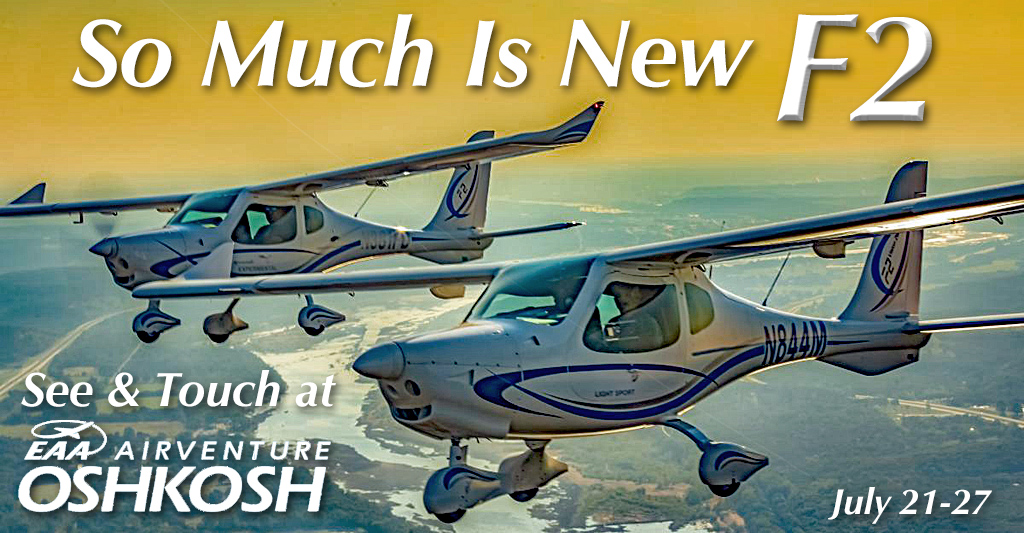
Since Light-Sport Aircraft first arrived on the aviation scene back in 2004, one brand has lead the fleet as it grew impressively. Flight Design has manufactured nearly 2,000 aircraft over those 21 years. Its several models can be found in most countries on Earth. After producing hundreds of CT-series LSA, the German company introduced their all-new F2 model with FAA’s still-to-come Mosaic regulation in mind. In every way, F2 is a premium upgrade to their earlier model. Numerous pilots have placed deposits. Imagine the challenge. Before Russia invaded, the Germany company did most of their fabrication in Ukraine. As hostilities increased, the company relocated staff, tooling, and inventory to the Czech Republic. Similar to most airframe builders, many components are sourced from countries best at manufacturing those parts. So Flight Design is already — has long been — an international company with operations in several nations. That it has new Chinese ownerships speaks significantly to businessmen in that country having the funds needed.


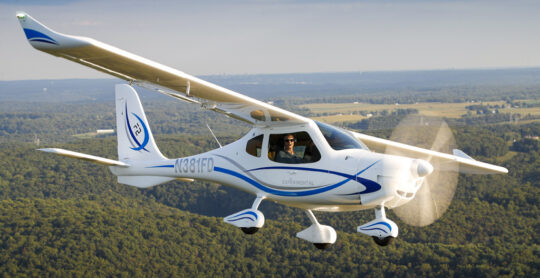 Since Light-Sport Aircraft first arrived on the aviation scene back in 2004, one brand has lead the fleet as it grew impressively. Flight Design has manufactured nearly 2,000 aircraft over those 21 years. Its several models can be found in most countries on Earth.
After producing hundreds of CT-series LSA, the German company introduced their all-new F2 model with FAA's still-to-come Mosaic regulation in mind. In every way, F2 is a premium upgrade to their earlier model. Numerous pilots have placed deposits.
Since Light-Sport Aircraft first arrived on the aviation scene back in 2004, one brand has lead the fleet as it grew impressively. Flight Design has manufactured nearly 2,000 aircraft over those 21 years. Its several models can be found in most countries on Earth.
After producing hundreds of CT-series LSA, the German company introduced their all-new F2 model with FAA's still-to-come Mosaic regulation in mind. In every way, F2 is a premium upgrade to their earlier model. Numerous pilots have placed deposits.
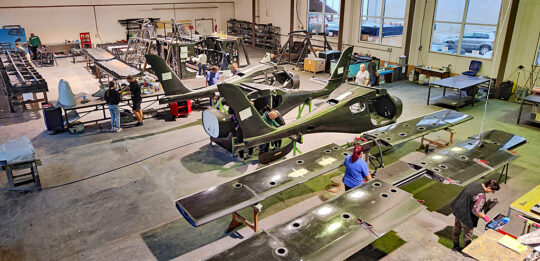 Imagine the challenge.
Imagine the challenge.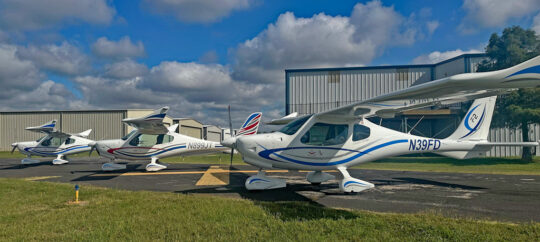 Some Americans are not fond of Chinese leadership even though we buy plenty of products from their companies. Several prominent American brands have been acquired by Chinese investors, including Cirrus, Continental, Icon, and Glasair. Chinese investors also own Diamond Aircraft and now, Flight Design. One of the first acquisitions, Cirrus, has been Chinese owned since 2011. Given steady sales since then, buyers seem unconcerned.
American LSA enthusiasts looking at F2 will be served by a U.S. company run by Americans. Airtime Aviation, now in its second generation of family operation, knows the light aircraft market as well as any dealership in the USA. How can I be so sure? Well, they have long been the largest and most successful retailer of LSA in America. They know you. They like you. They speak your language.
Some Americans are not fond of Chinese leadership even though we buy plenty of products from their companies. Several prominent American brands have been acquired by Chinese investors, including Cirrus, Continental, Icon, and Glasair. Chinese investors also own Diamond Aircraft and now, Flight Design. One of the first acquisitions, Cirrus, has been Chinese owned since 2011. Given steady sales since then, buyers seem unconcerned.
American LSA enthusiasts looking at F2 will be served by a U.S. company run by Americans. Airtime Aviation, now in its second generation of family operation, knows the light aircraft market as well as any dealership in the USA. How can I be so sure? Well, they have long been the largest and most successful retailer of LSA in America. They know you. They like you. They speak your language.
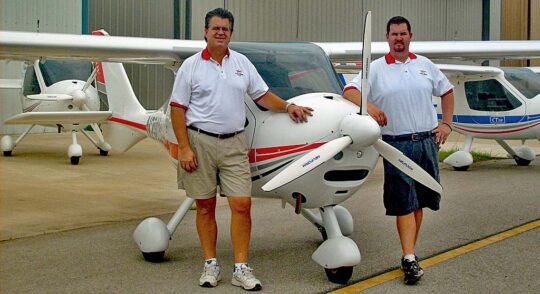
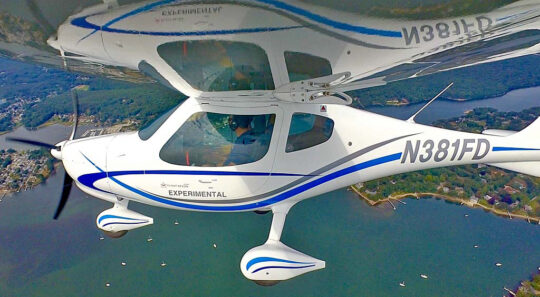 SG Investments is channeling their energy and resources into enhancing the Flight Design's Czech production facility. "They have laid out ambitious plans to ramp up production to four airplanes per month by the close of 2025," said Tom. "SG will go further with a brand-new facility in the Czech Republic, proving their commitment to innovation and expansion."
"SG Investments is officially an American company," though Tom observed this is merely offices. "Production will remain in Europe where a top Chinese executive for the company has lived for the last 19 years." Shang Gong Group is big in manufacturing. The corporation employs 5,200 employees, of which 2,200 (42%) are not in China. Principally, they make sewing machines, Tom identified.
SG Investments is channeling their energy and resources into enhancing the Flight Design's Czech production facility. "They have laid out ambitious plans to ramp up production to four airplanes per month by the close of 2025," said Tom. "SG will go further with a brand-new facility in the Czech Republic, proving their commitment to innovation and expansion."
"SG Investments is officially an American company," though Tom observed this is merely offices. "Production will remain in Europe where a top Chinese executive for the company has lived for the last 19 years." Shang Gong Group is big in manufacturing. The corporation employs 5,200 employees, of which 2,200 (42%) are not in China. Principally, they make sewing machines, Tom identified.
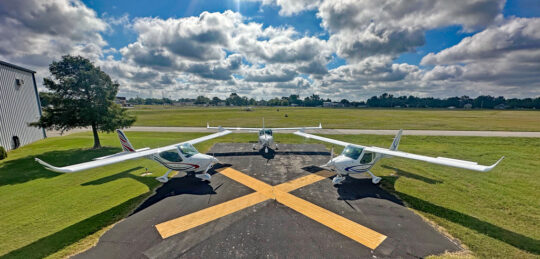 "While seeking a new F2 production facility, close to an airport, SG wants a highly professional factory aiming to modernize production," Tom added. "They already have personnel and equipment for this." New facilities will let Flight Design raise production from four F2s per month to six per month.
"While seeking a new F2 production facility, close to an airport, SG wants a highly professional factory aiming to modernize production," Tom added. "They already have personnel and equipment for this." New facilities will let Flight Design raise production from four F2s per month to six per month.
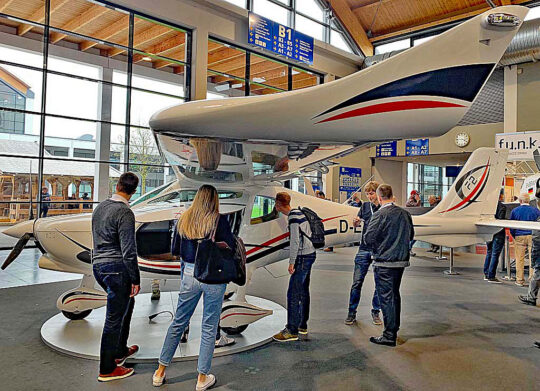
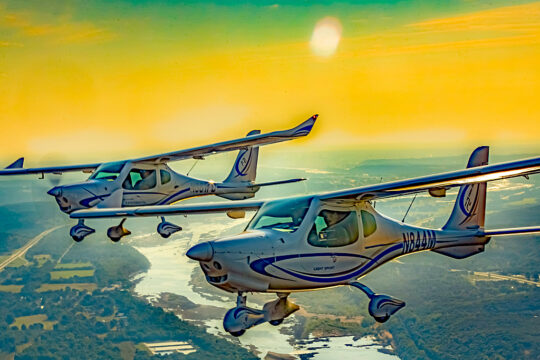 Airtime Aviation, based centrally in Tulsa, Oklahoma aims to ensure that individuals and businesses across the United States have access to Flight Design's cutting-edge aircraft. "We manage the entire importation process, ensuring full compliance with FAA regulations, and offer a robust network of sales and independent, qualified service centers throughout the country," Tom added.
Although Airtime does not directly offer flight training, the Tulsa company is a strong advocate for safe and effective flight instruction and can connect buyers with flight schools and instructors who know and operate Flight Design aircraft.
See F2 and speak to Airtime representatives at EAA AirVenture Oshkosh 2025 running from July 21 to 27.
Airtime Aviation, based centrally in Tulsa, Oklahoma aims to ensure that individuals and businesses across the United States have access to Flight Design's cutting-edge aircraft. "We manage the entire importation process, ensuring full compliance with FAA regulations, and offer a robust network of sales and independent, qualified service centers throughout the country," Tom added.
Although Airtime does not directly offer flight training, the Tulsa company is a strong advocate for safe and effective flight instruction and can connect buyers with flight schools and instructors who know and operate Flight Design aircraft.
See F2 and speak to Airtime representatives at EAA AirVenture Oshkosh 2025 running from July 21 to 27.
 This video was recorded at Midwest LSA Expo 2020
This video was recorded at Midwest LSA Expo 2020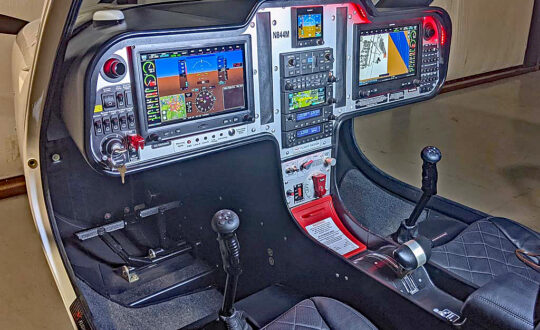
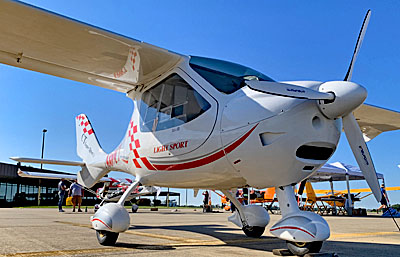 "We have recently moved production of the CT-series — including CTLSi and CT Super (nearby image), which continue to be popular worldwide — to our new partners in Kazakhstan. This allows us to focus more on the F2 at Sumperk,” said Daniel.
If you can't recall where Kazakhstan is, don't fret. Such remote fabrication has been used by Boeing and Airbus for many years. The parent company in Germany is permitted to sublet work to off-site facilities so long as they maintain control of the design and conduct regular oversight of production and quality control. After many years of doing exactly that in Ukraine, Flight Design is well equipped to pursue building its CT-series in Kazakhstan, Central Asia.
"We have recently moved production of the CT-series — including CTLSi and CT Super (nearby image), which continue to be popular worldwide — to our new partners in Kazakhstan. This allows us to focus more on the F2 at Sumperk,” said Daniel.
If you can't recall where Kazakhstan is, don't fret. Such remote fabrication has been used by Boeing and Airbus for many years. The parent company in Germany is permitted to sublet work to off-site facilities so long as they maintain control of the design and conduct regular oversight of production and quality control. After many years of doing exactly that in Ukraine, Flight Design is well equipped to pursue building its CT-series in Kazakhstan, Central Asia.
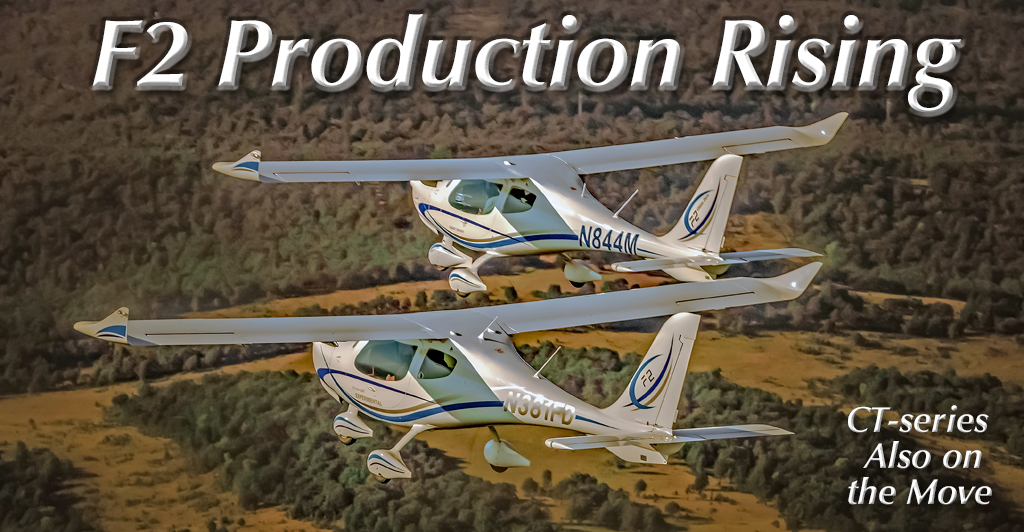
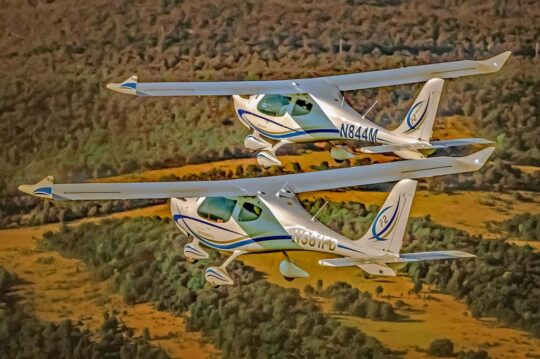 In the middle of the last decade, long before Putin's aggression, LSA market leader Flight Design went through a German-imposed reorganization. While difficult, the company emerged stronger and more stable.
In development through this challenging time, Flight Design unveiled their new F-series, starting with their two-seat LSA F2 model at Aero Friedrichshafen 2019. They also displayed an F2e powered by electric motor. Those who examined these displays could readily see the spacious fuselage was built with a four seater in mind for the future. Things were progressing well…
In the middle of the last decade, long before Putin's aggression, LSA market leader Flight Design went through a German-imposed reorganization. While difficult, the company emerged stronger and more stable.
In development through this challenging time, Flight Design unveiled their new F-series, starting with their two-seat LSA F2 model at Aero Friedrichshafen 2019. They also displayed an F2e powered by electric motor. Those who examined these displays could readily see the spacious fuselage was built with a four seater in mind for the future. Things were progressing well…
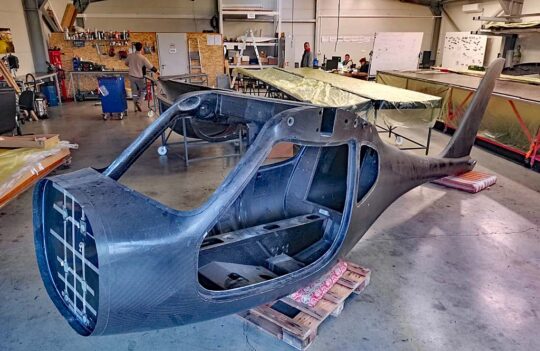
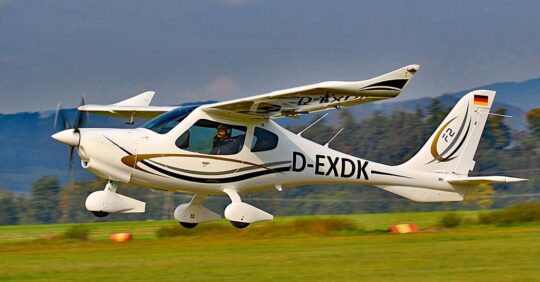 Despite such hardships, Flight Design's German leaders and team closed ranks and moved production to Šumperk, Czech Republic, near the country's northern border with Poland, about 100 miles east of Prague.
“[The company is using] a new, 25,000-square-foot site suitable for use as a production and paint shop,” reported longtime importer, Tom Peghiny in an article from AOPA. The company had been doing some development work in Czech and now expanded their footprint to take up manufacturing. This represented a huge effort under the most trying — and dangerous — of conditions.
The accompanying images show elements of the work to establish a new production facility. Since most molds and other tooling could not be removed from Kherson to Šumperk — about 1,000 miles to the west — the company had to acquire new production jigs and they had to do this while supply lines were pinched, shipping costs were sky-high, and interest rates were rising on funds needed to create a new manufacturing plant.
Despite such hardships, Flight Design's German leaders and team closed ranks and moved production to Šumperk, Czech Republic, near the country's northern border with Poland, about 100 miles east of Prague.
“[The company is using] a new, 25,000-square-foot site suitable for use as a production and paint shop,” reported longtime importer, Tom Peghiny in an article from AOPA. The company had been doing some development work in Czech and now expanded their footprint to take up manufacturing. This represented a huge effort under the most trying — and dangerous — of conditions.
The accompanying images show elements of the work to establish a new production facility. Since most molds and other tooling could not be removed from Kherson to Šumperk — about 1,000 miles to the west — the company had to acquire new production jigs and they had to do this while supply lines were pinched, shipping costs were sky-high, and interest rates were rising on funds needed to create a new manufacturing plant.
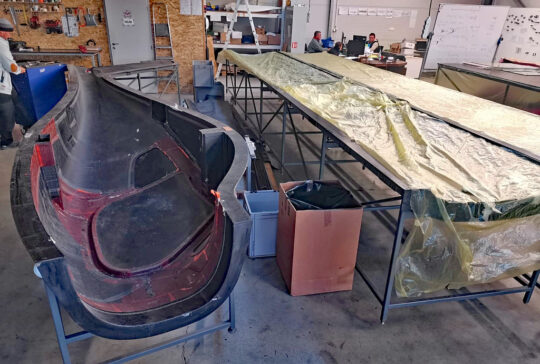
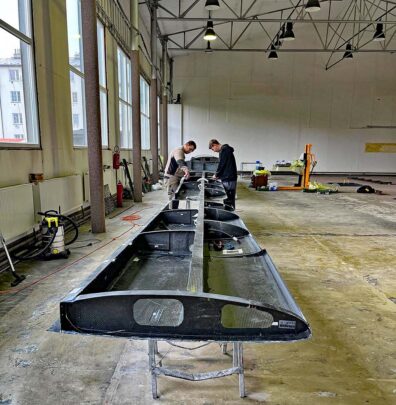
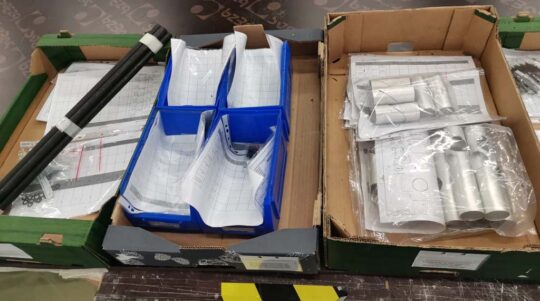
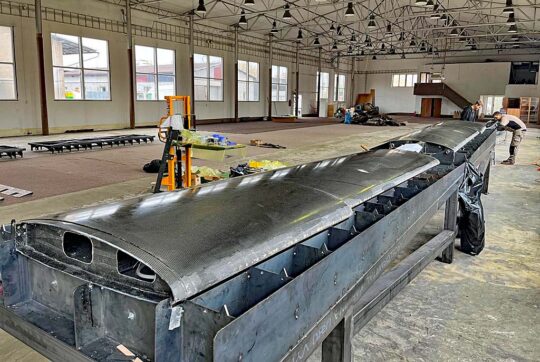
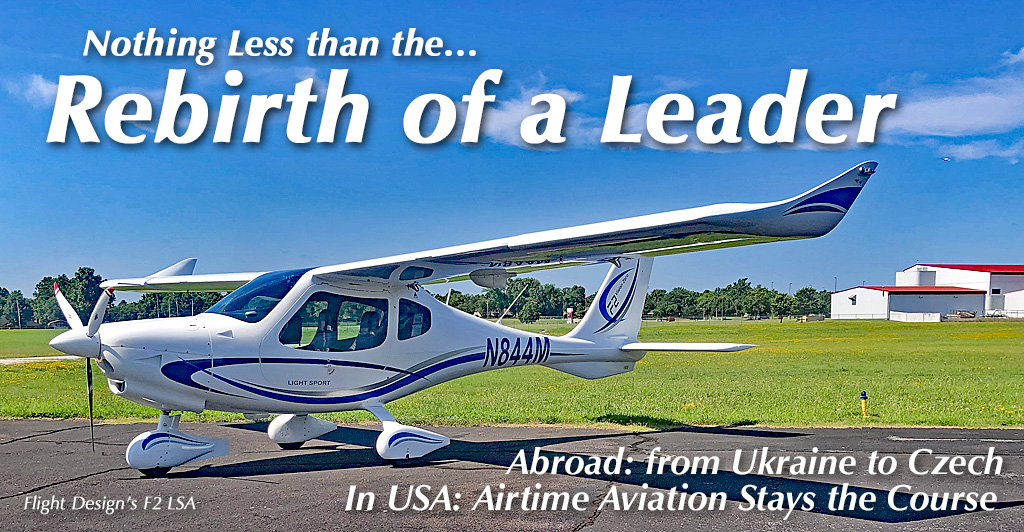
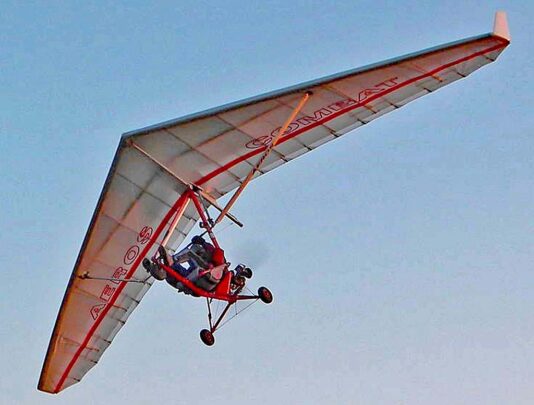
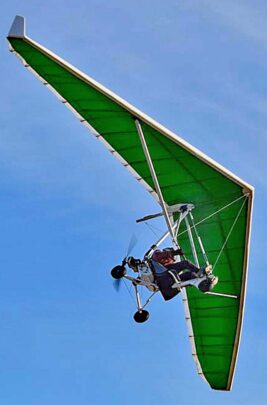 Still the Aeros team continues to build and deliver their flying machines, ranging from hang gliders to trikes to the Sky Ranger three-axis airplanes (
Still the Aeros team continues to build and deliver their flying machines, ranging from hang gliders to trikes to the Sky Ranger three-axis airplanes (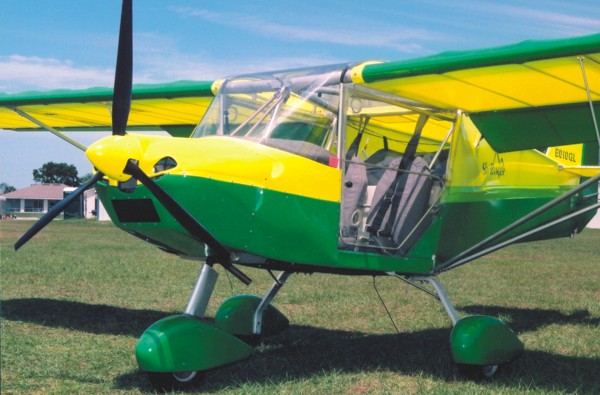
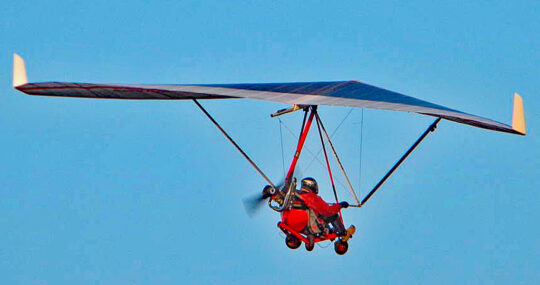
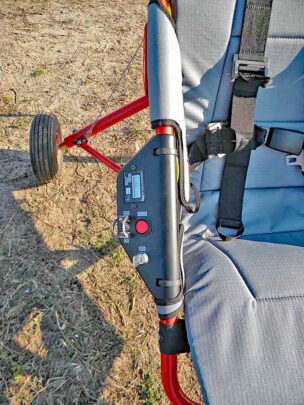 Fox T is another wing for nanolight trikes, created for "those who want to feel the simplicity and real pleasure of bird-like flying," said Aeros. Fox T offers low and slow maneuverable flying. "Fox T has been developed from our beginner Fox glider and has been reinforced and adapted exclusively for flying with nanolight trikes," Aeros clarified.
For experienced pilots wanting maximum performance, Aeros offers their Combat T, "a step higher in nanolight technology, designed for those who want to fly faster and farther."
Besides the Polini or Vittorazi two-stroke engines adapted from the powered paraglider industry, Aeros offers a
Fox T is another wing for nanolight trikes, created for "those who want to feel the simplicity and real pleasure of bird-like flying," said Aeros. Fox T offers low and slow maneuverable flying. "Fox T has been developed from our beginner Fox glider and has been reinforced and adapted exclusively for flying with nanolight trikes," Aeros clarified.
For experienced pilots wanting maximum performance, Aeros offers their Combat T, "a step higher in nanolight technology, designed for those who want to fly faster and farther."
Besides the Polini or Vittorazi two-stroke engines adapted from the powered paraglider industry, Aeros offers a 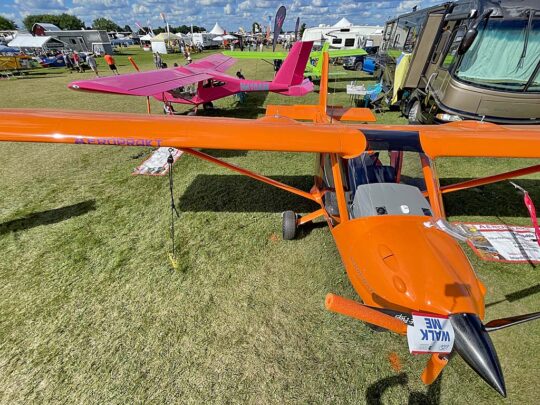 When I visited this company many years ago, they were new in western markets. Fortunately for them, a wealthy Saudi Arab businessman and flying enthusiast helped bankroll the new company.
On my visit, I saw an active operation with workers buzzing to build aircraft. However, they did so in a converted factory that was far from optimal. They made it work but they had ambitions for another facility.
When I visited this company many years ago, they were new in western markets. Fortunately for them, a wealthy Saudi Arab businessman and flying enthusiast helped bankroll the new company.
On my visit, I saw an active operation with workers buzzing to build aircraft. However, they did so in a converted factory that was far from optimal. They made it work but they had ambitions for another facility.
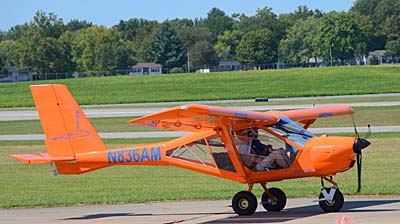
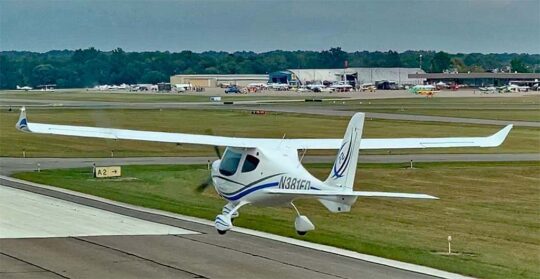
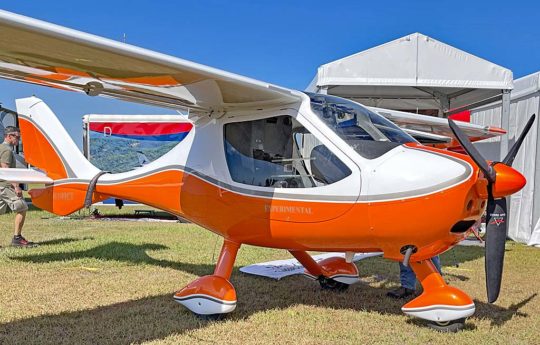
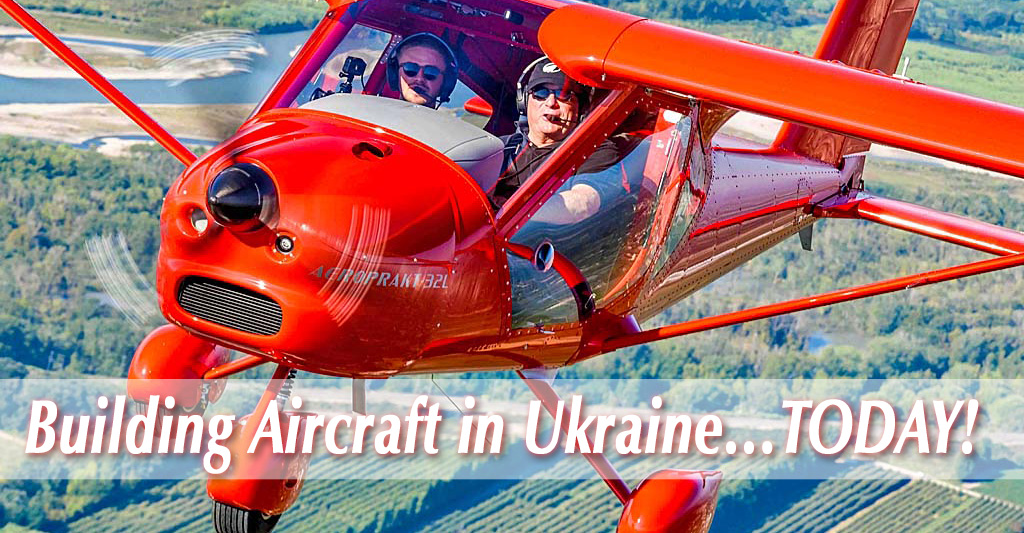
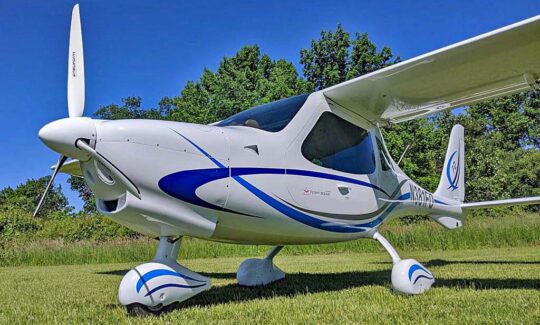 Both airplane producer stories made it into mainstream media.
If we go way back in time, to 2003, that is, before Light-Sport Aircraft, we saw a world where Americans flew kit-built airplanes while European pilots were flying what they called ultralights or microlights. Of course, this is an oversimplification but we had no idea the two methods of production would converge as they have in the last two decades.
Using widely-accepted consensus standards, Light-Sport Aircraft can operate in multiple countries — thanks to the useful work of many volunteers that assembled and maintain ASTM standards embraced by FAA and other CAAs all over the planet.
Let's look at these two stories…
Both airplane producer stories made it into mainstream media.
If we go way back in time, to 2003, that is, before Light-Sport Aircraft, we saw a world where Americans flew kit-built airplanes while European pilots were flying what they called ultralights or microlights. Of course, this is an oversimplification but we had no idea the two methods of production would converge as they have in the last two decades.
Using widely-accepted consensus standards, Light-Sport Aircraft can operate in multiple countries — thanks to the useful work of many volunteers that assembled and maintain ASTM standards embraced by FAA and other CAAs all over the planet.
Let's look at these two stories…
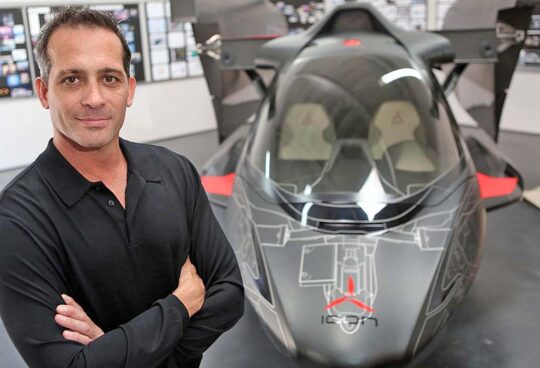

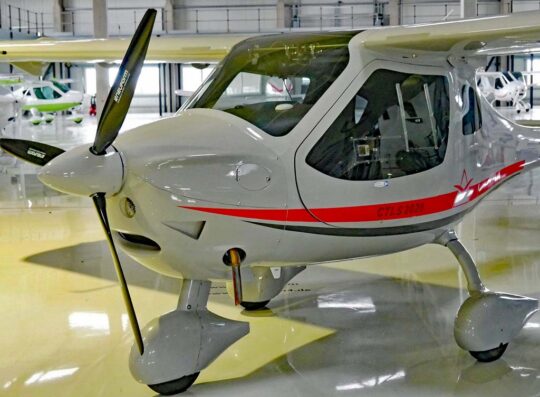 “At this point, there are about 10 to 12 airframes at the Kherson plant,” Peghiny said to AOPA. "Ordinarily, the airframes would be sent to Flight Design’s final assembly and completion center in the city of Šumperk in the Czech Republic."
“We’ve found a new, 25,000-square-foot site [in Šumperk that is] suitable for use as a production and paint shop, and will use that in the future,” Peghiny said in the AOPA article. Engineering work is also conducted in Šumperk.
"Flight Design is offering to move its Ukraine staff and their families to the Šumperk facility," AOPA wrote. "Peghiny said that the Kherson plant will function as long as conditions allow. However, tooling currently remaining in Kherson will have to be replaced by newly manufactured tooling for use in Šumperk. The company will fund new tooling, but it may take six to nine months to build."
“At this point, there are about 10 to 12 airframes at the Kherson plant,” Peghiny said to AOPA. "Ordinarily, the airframes would be sent to Flight Design’s final assembly and completion center in the city of Šumperk in the Czech Republic."
“We’ve found a new, 25,000-square-foot site [in Šumperk that is] suitable for use as a production and paint shop, and will use that in the future,” Peghiny said in the AOPA article. Engineering work is also conducted in Šumperk.
"Flight Design is offering to move its Ukraine staff and their families to the Šumperk facility," AOPA wrote. "Peghiny said that the Kherson plant will function as long as conditions allow. However, tooling currently remaining in Kherson will have to be replaced by newly manufactured tooling for use in Šumperk. The company will fund new tooling, but it may take six to nine months to build."
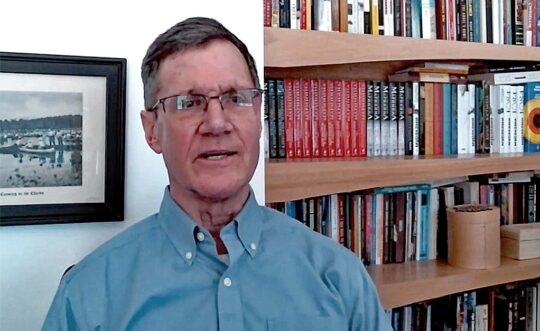
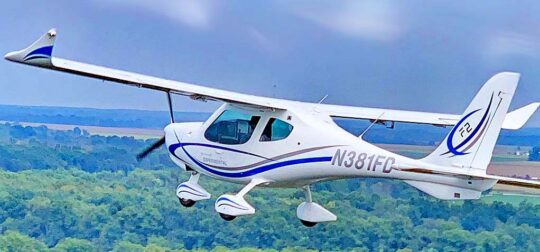 "Flight Design employs just under 200 technicians, assemblers, and engineers currently at the Kherson plant," continued Boatman, "and according to Peghiny, the company has been ramping up that number. 'We were hiring more aggressively in the past year because of the popularity of the F2, but the other models in the range have been selling well in Europe — simpler, lighter models in particular,' Tom said." Of course, Tom refers to the CT-series including CTLS that is one of the most popular LSA in America.
“We know [our employees] very well,” Peghiny said in Boatman's article. “Some have been with the company more than 20 years. We’re good friends, and we take this very personally.”
"Flight Design employs just under 200 technicians, assemblers, and engineers currently at the Kherson plant," continued Boatman, "and according to Peghiny, the company has been ramping up that number. 'We were hiring more aggressively in the past year because of the popularity of the F2, but the other models in the range have been selling well in Europe — simpler, lighter models in particular,' Tom said." Of course, Tom refers to the CT-series including CTLS that is one of the most popular LSA in America.
“We know [our employees] very well,” Peghiny said in Boatman's article. “Some have been with the company more than 20 years. We’re good friends, and we take this very personally.”
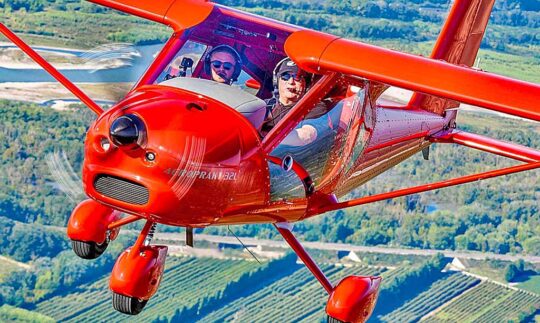 Dave Hirschman wrote, "Dennis Long, a dealer for Aeroprakt… said he spoke with factory officials who said they plan to remain on the job. 'They told me they’re going to keep making airplanes until they can’t'," AOPA reported. 'For the time being, it’s business as usual, although my next two airplanes will likely have to be shipped from Poland because the port of Odessa [in Ukraine] is closed.'”
Aeroprakt has steady registered more aircraft with the FAA. When asked by AOPA's writer, Dennis said, "Right now, due to all the uncertainty, I’m not taking any new deposits. I’m more concerned about the people over there than the airplanes at this moment."
Dave Hirschman wrote, "Dennis Long, a dealer for Aeroprakt… said he spoke with factory officials who said they plan to remain on the job. 'They told me they’re going to keep making airplanes until they can’t'," AOPA reported. 'For the time being, it’s business as usual, although my next two airplanes will likely have to be shipped from Poland because the port of Odessa [in Ukraine] is closed.'”
Aeroprakt has steady registered more aircraft with the FAA. When asked by AOPA's writer, Dennis said, "Right now, due to all the uncertainty, I’m not taking any new deposits. I’m more concerned about the people over there than the airplanes at this moment."
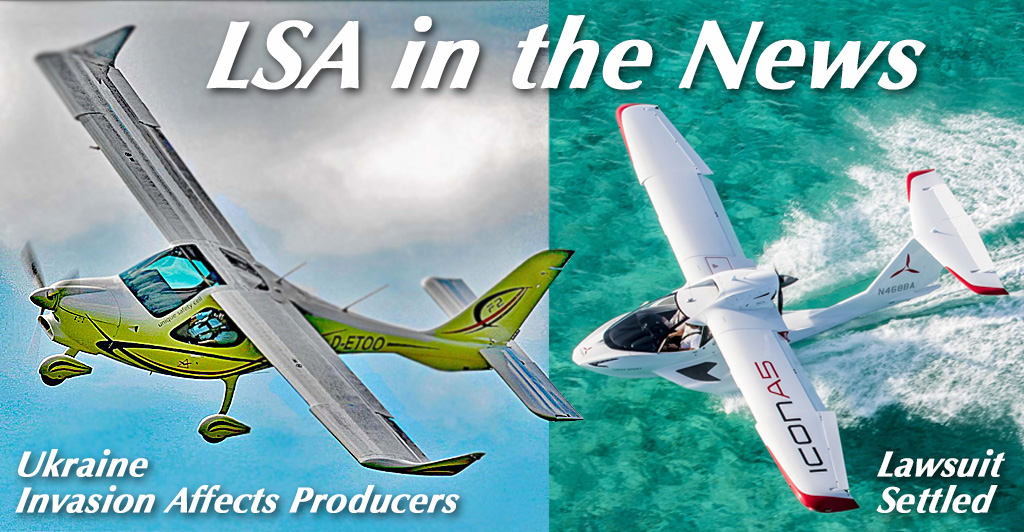
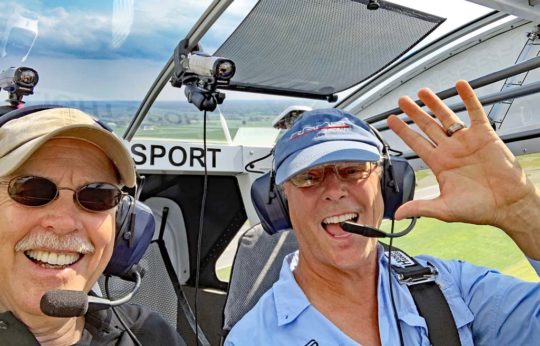 The Covid pandemic of 2020/2021 appears not to have slowed enjoyment of flying for fun… for most of us anyway. I sincerely regret anyone who suffered during this period but sport aviation has held up surprisingly well.
In this article, I will tackle a couple reader questions, the sort I hear all the time. To answer several people with one response, I asked reader John Joyce if I could use his question and name. He consented, so here we go…
The Covid pandemic of 2020/2021 appears not to have slowed enjoyment of flying for fun… for most of us anyway. I sincerely regret anyone who suffered during this period but sport aviation has held up surprisingly well.
In this article, I will tackle a couple reader questions, the sort I hear all the time. To answer several people with one response, I asked reader John Joyce if I could use his question and name. He consented, so here we go…
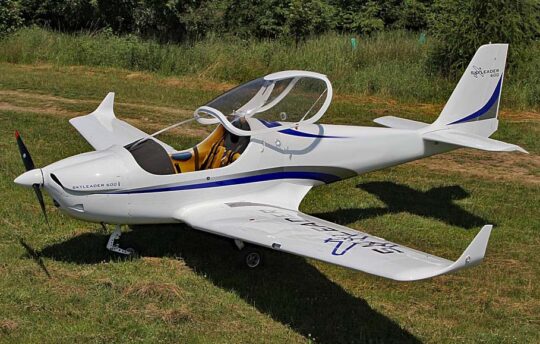 "By way of example," John continued, "there are nearly 300 SportCruisers registered in the US, as well as nearly 350 Flight Design models, but only 3 Skyleaders. I’m not picking on Skyleader; there are many manufacturers with just two, five or 20 registrations in the database."
Matter of fact, our N-number database is another useful reference we offer. You can use the
"By way of example," John continued, "there are nearly 300 SportCruisers registered in the US, as well as nearly 350 Flight Design models, but only 3 Skyleaders. I’m not picking on Skyleader; there are many manufacturers with just two, five or 20 registrations in the database."
Matter of fact, our N-number database is another useful reference we offer. You can use the 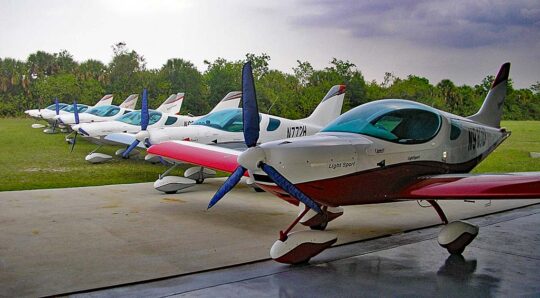
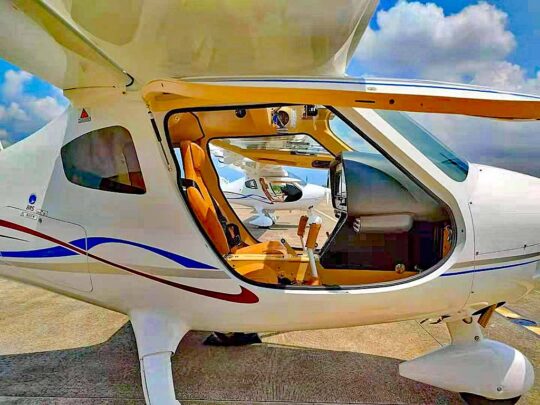
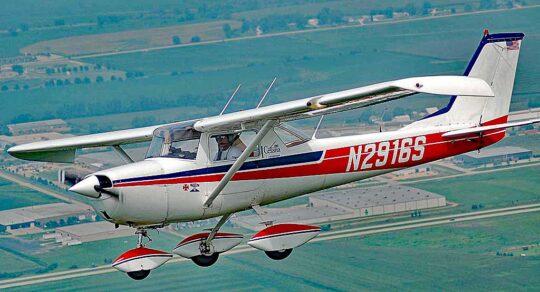
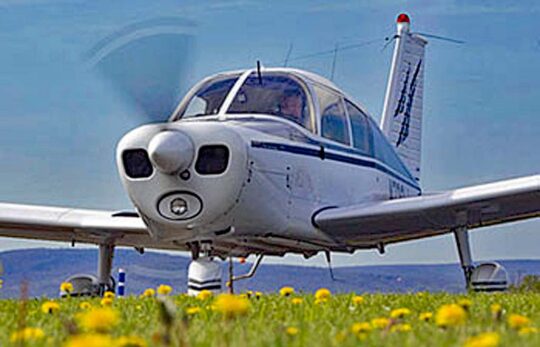
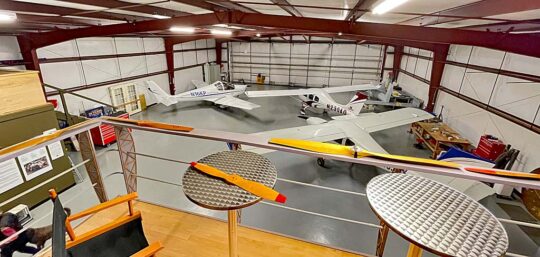
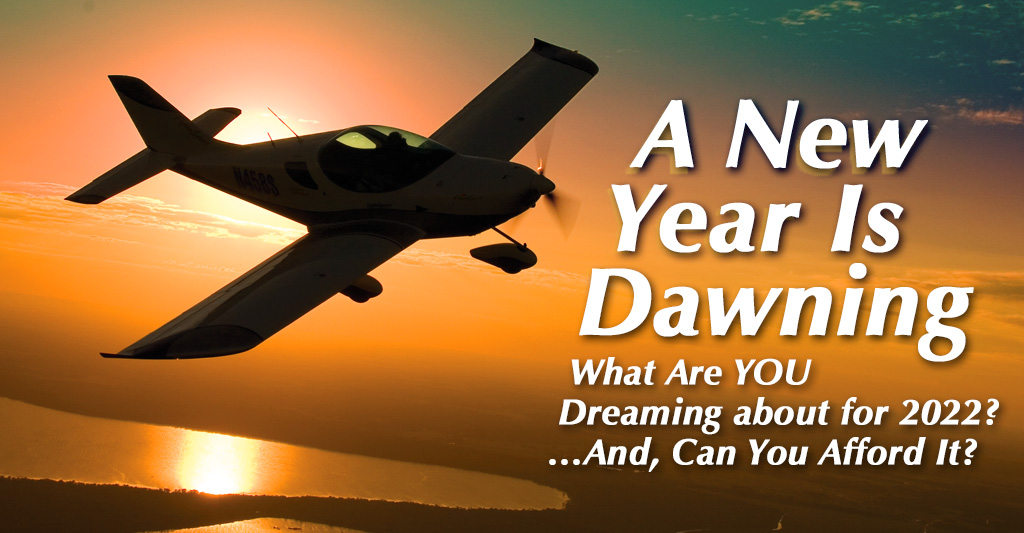

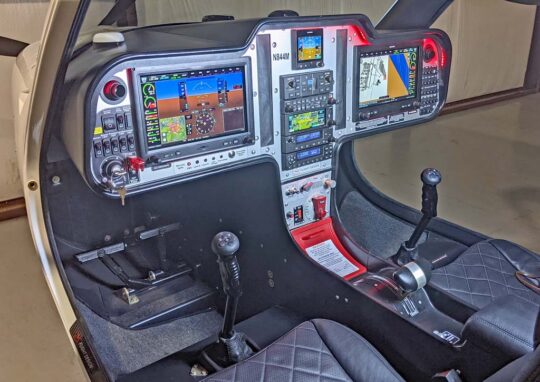
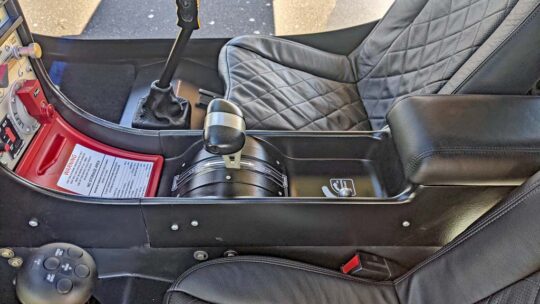
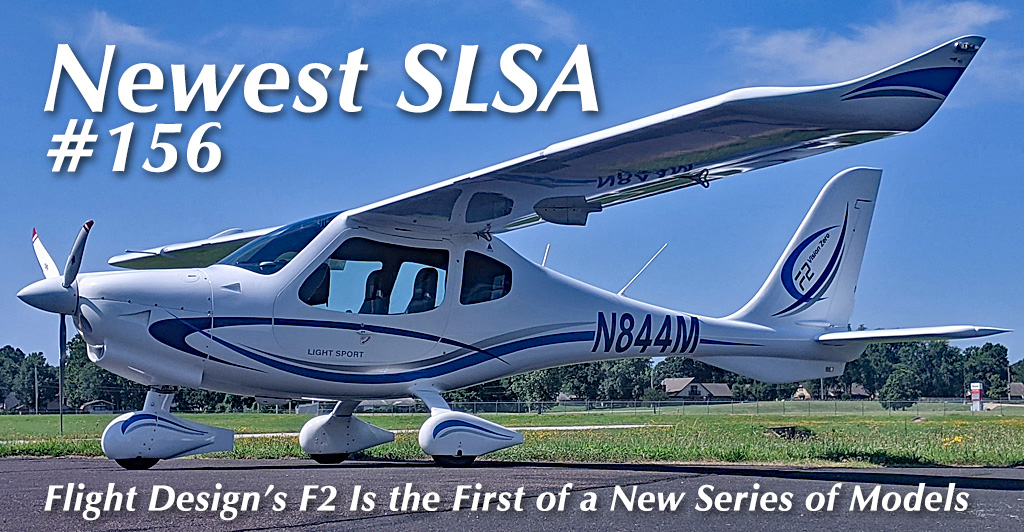
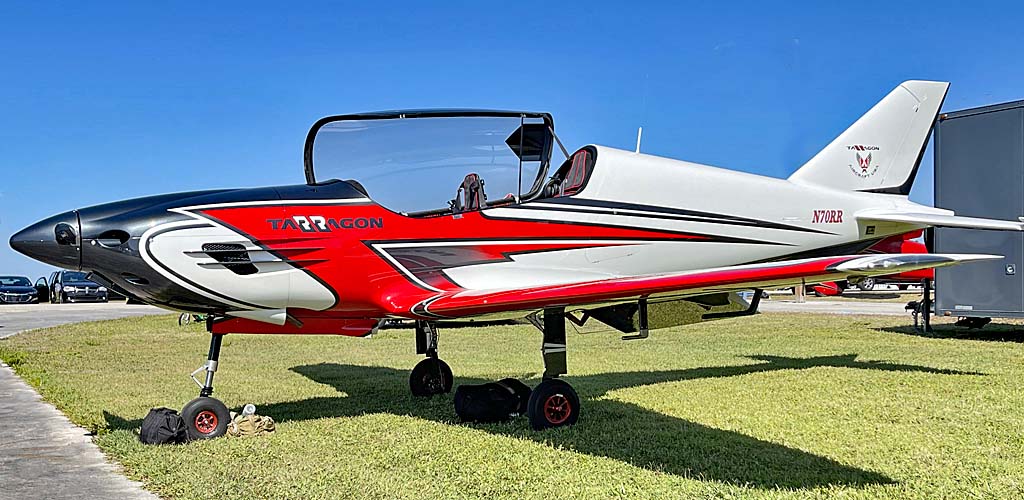
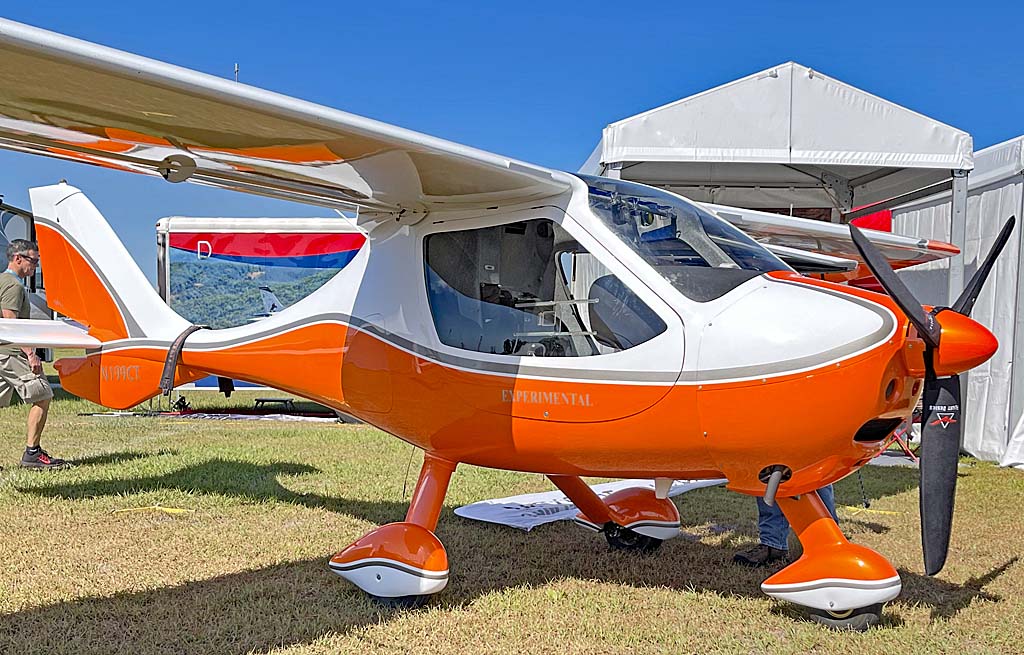
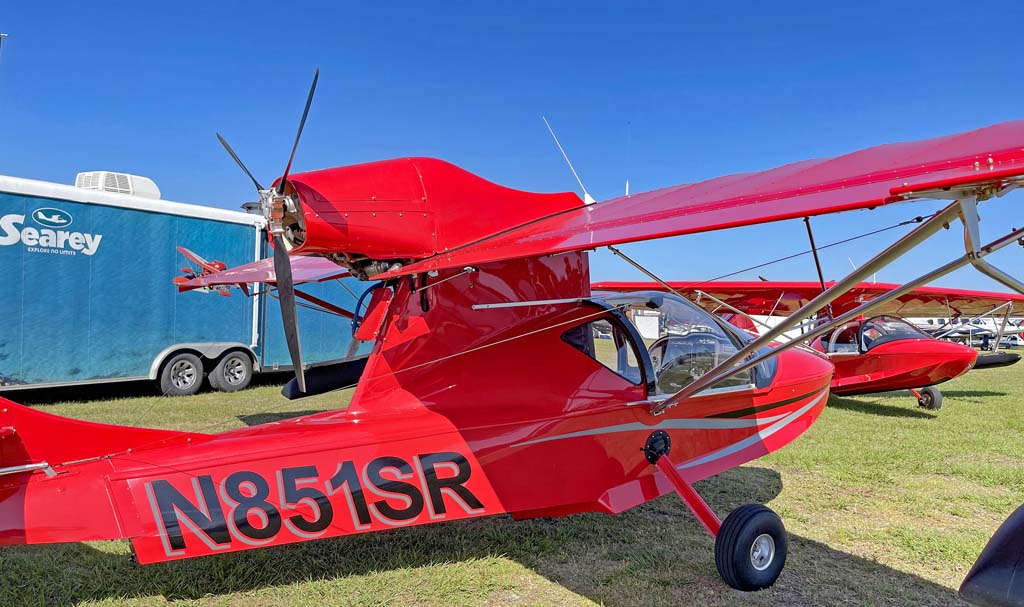
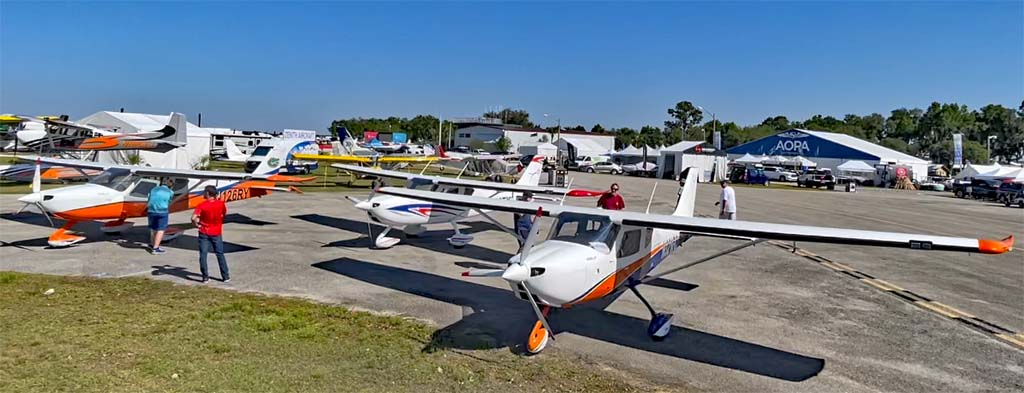
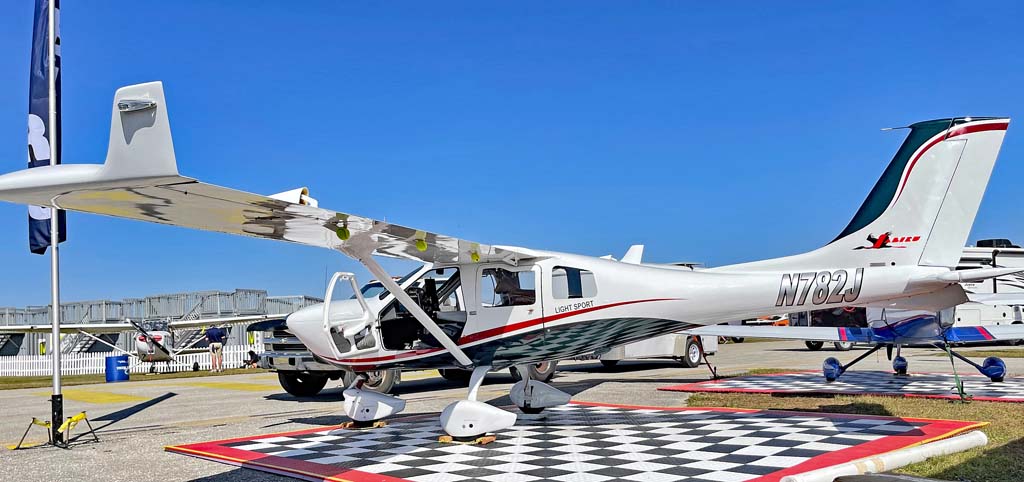
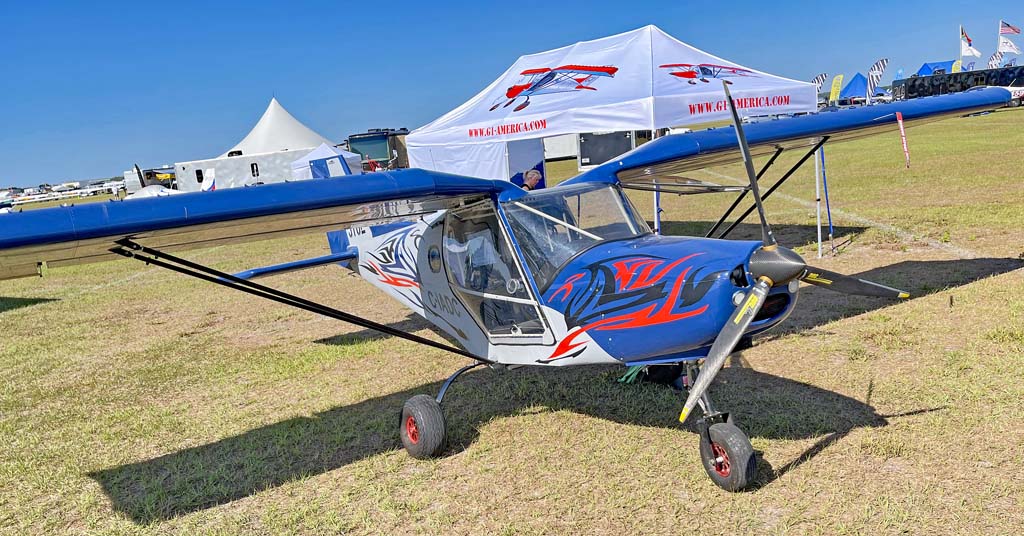
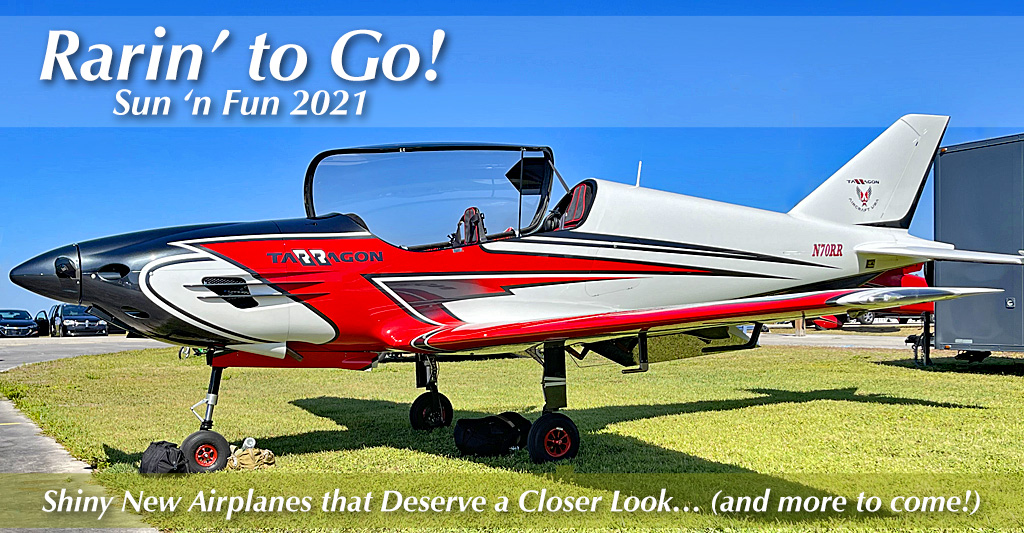
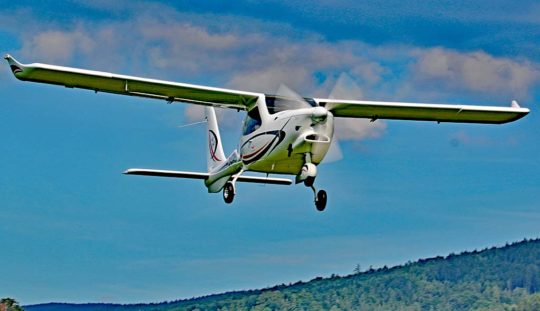 Then came the sophisticated CTLS, wholly redone for the American market. It enlarged the cabin and lengthened the fuselage becoming more deluxe throughout.
Now, we come to F2 in what I'm calling the third generation of the iconic shape that still leads the LSA market after almost 17 years. The one and only example presently in America is currently based at
Then came the sophisticated CTLS, wholly redone for the American market. It enlarged the cabin and lengthened the fuselage becoming more deluxe throughout.
Now, we come to F2 in what I'm calling the third generation of the iconic shape that still leads the LSA market after almost 17 years. The one and only example presently in America is currently based at 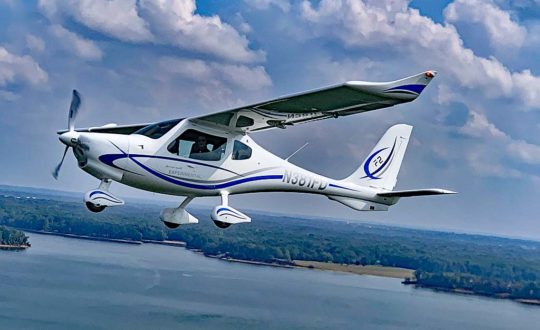 Nearly every airshow was cancelled for 2020 amidst the global economic carnage driven by lockdowns and travel restrictions to contain Covid.
Well, every show was scrubbed except the Midwest LSA Expo in Mt. Vernon, Illinois. Because that one and only event happened — with no negatives regarding the virus, so far as I know — I got to see and fly Flight Design's latest and greatest, the F2. Not only was the airshow a welcome change from the social barriers everyone had faced over the last few months, but Midwest 2020 provided a venue to see and fly the new model.
"CTSW was a Porsche. CTLS was a Corvette. F2 is a Cadillac," said Tom Gutmann, Jr., the younger half of the father and son
Nearly every airshow was cancelled for 2020 amidst the global economic carnage driven by lockdowns and travel restrictions to contain Covid.
Well, every show was scrubbed except the Midwest LSA Expo in Mt. Vernon, Illinois. Because that one and only event happened — with no negatives regarding the virus, so far as I know — I got to see and fly Flight Design's latest and greatest, the F2. Not only was the airshow a welcome change from the social barriers everyone had faced over the last few months, but Midwest 2020 provided a venue to see and fly the new model.
"CTSW was a Porsche. CTLS was a Corvette. F2 is a Cadillac," said Tom Gutmann, Jr., the younger half of the father and son 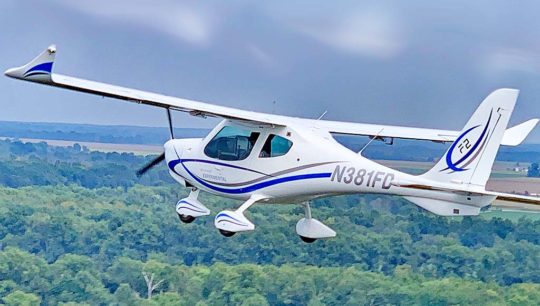 Tom explained that F2 may look similar to CT but is a nose-to-tail, tip-to-tip refreshed design. It has been some time in development because as Tom noted, "Flight Design engineers had to rework the whole airplane. It is significantly larger than CTLS yet final production models should weigh no more." That's some accomplishment!
It is also built quite differently. All CTLS are essentially "hand made" with hand-layup molds that display the skill of factory workers yet makes each one unique. For F2, Tom said, Flight Design uses molds created on 5-axis CNC shaping tools so each one is fabricated to precise specifications. You may not be able to see the difference in construction but the new method is far better for serial production.
Tom explained that F2 may look similar to CT but is a nose-to-tail, tip-to-tip refreshed design. It has been some time in development because as Tom noted, "Flight Design engineers had to rework the whole airplane. It is significantly larger than CTLS yet final production models should weigh no more." That's some accomplishment!
It is also built quite differently. All CTLS are essentially "hand made" with hand-layup molds that display the skill of factory workers yet makes each one unique. For F2, Tom said, Flight Design uses molds created on 5-axis CNC shaping tools so each one is fabricated to precise specifications. You may not be able to see the difference in construction but the new method is far better for serial production.
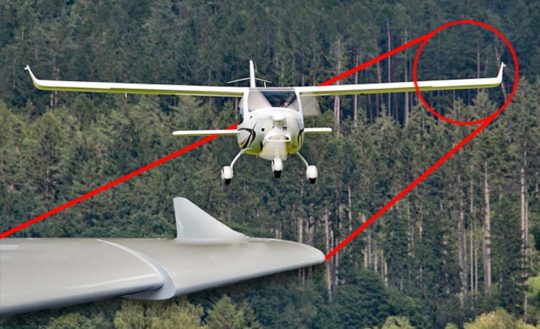 "F2 is manufactured to close tolerances in pre-impregnated carbon fiber for great structural strength and light weight," said Flight Design in Germany. With prepreg carbon fiber from American company Hexcel, F2's honeycomb-core fuselage signifies a big step forward.
Likewise, F2's new wing is a major redesign; the outboard sections feature aerodynamic cuffs (nearby photo).
F2’s tail is all-new as well. CTLS's full-flying stabilator is replaced with a wider stabilizer that has a discrete two-piece elevator with a center section that remains stationary forming what's often called a duck tail. This aids in meeting the ASTM handling requirement. One result is that the airplane does not pitch up during a departure stall.
"F2 is manufactured to close tolerances in pre-impregnated carbon fiber for great structural strength and light weight," said Flight Design in Germany. With prepreg carbon fiber from American company Hexcel, F2's honeycomb-core fuselage signifies a big step forward.
Likewise, F2's new wing is a major redesign; the outboard sections feature aerodynamic cuffs (nearby photo).
F2’s tail is all-new as well. CTLS's full-flying stabilator is replaced with a wider stabilizer that has a discrete two-piece elevator with a center section that remains stationary forming what's often called a duck tail. This aids in meeting the ASTM handling requirement. One result is that the airplane does not pitch up during a departure stall.
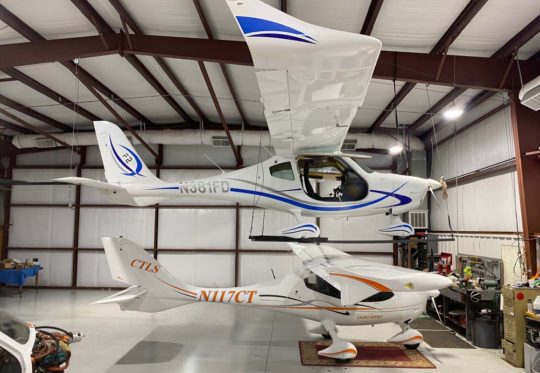 The altered horizontal tail works cooperatively with the wing cuffs to make a highly stall-resistant airframe, a feature FAA admires so much they gave Icon Aircraft
The altered horizontal tail works cooperatively with the wing cuffs to make a highly stall-resistant airframe, a feature FAA admires so much they gave Icon Aircraft 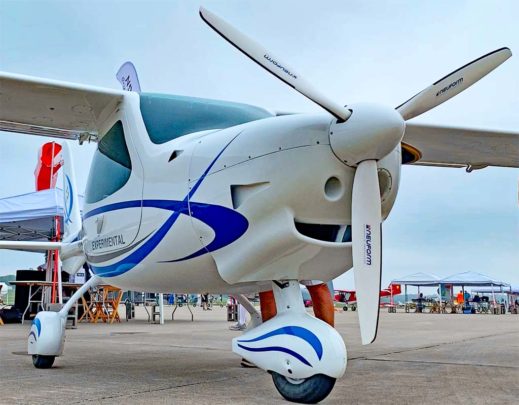
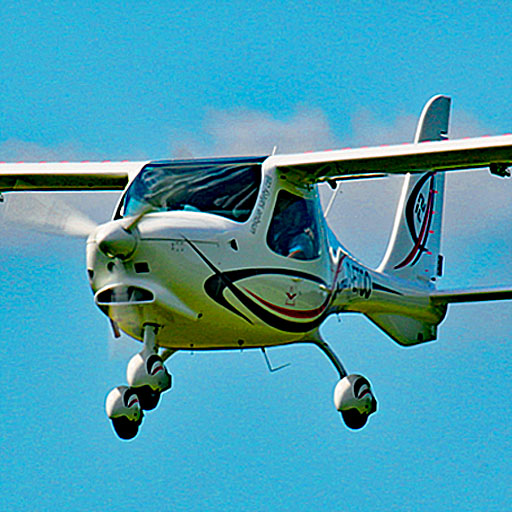 Cruise speed at a low altitude (approximately 3,000 feet density altitude) exceeded 115 knots while burning barely over 4 gallons an hour; Rotax's 912iS is known for its fuel miserliness. This allows a topped-off F2 to fly close to 1,000 statute miles. You can fly cross country to a destination and return to base without buying fuel. I once enjoyed this quality while
Cruise speed at a low altitude (approximately 3,000 feet density altitude) exceeded 115 knots while burning barely over 4 gallons an hour; Rotax's 912iS is known for its fuel miserliness. This allows a topped-off F2 to fly close to 1,000 statute miles. You can fly cross country to a destination and return to base without buying fuel. I once enjoyed this quality while 
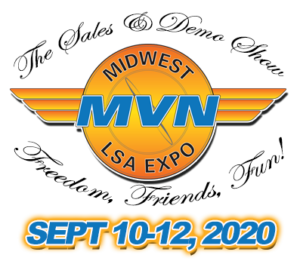 I hope you can attend 2020's
I hope you can attend 2020's 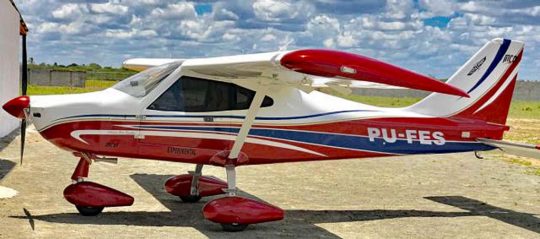 MC-01 by Montaer
MC-01 by Montaer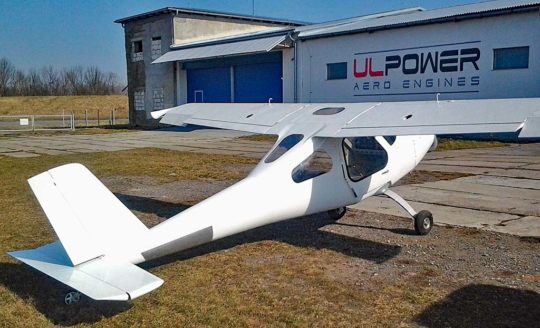
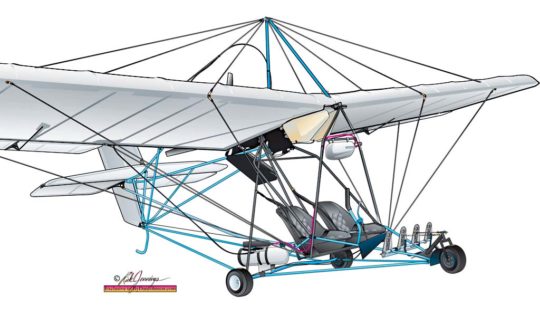 SmithSilver by Tri-State Kite
SmithSilver by Tri-State Kite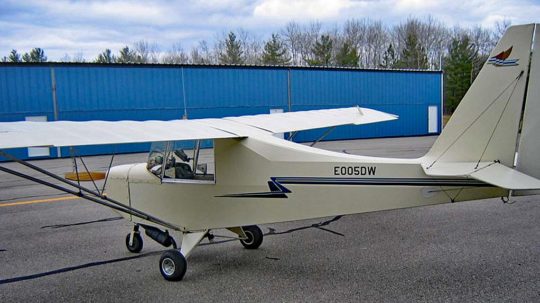 Sparrow by Carlson
Sparrow by Carlson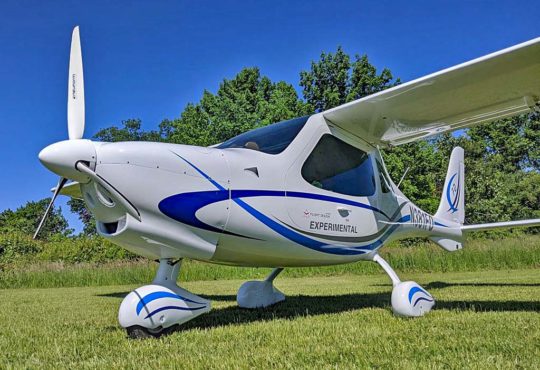 F2 by Flight Design
F2 by Flight Design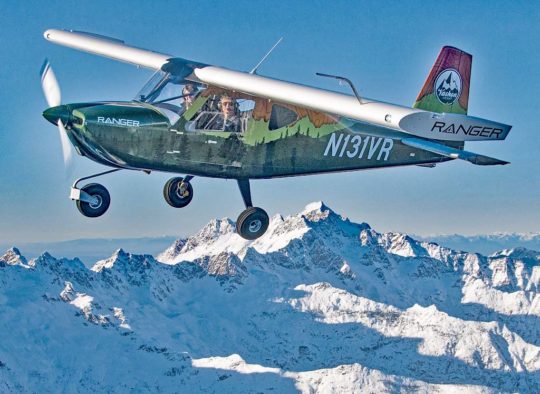 Vashon Ranger
Vashon Ranger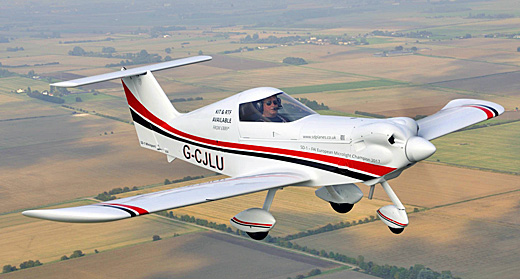
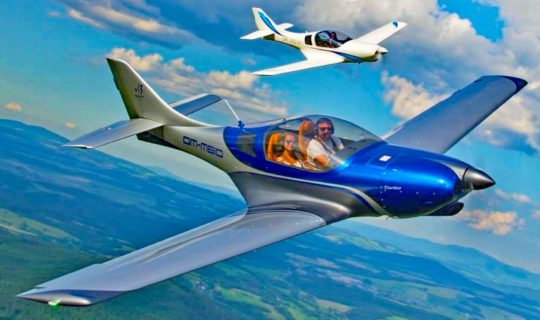 VL3 by JMB Aircraft
VL3 by JMB Aircraft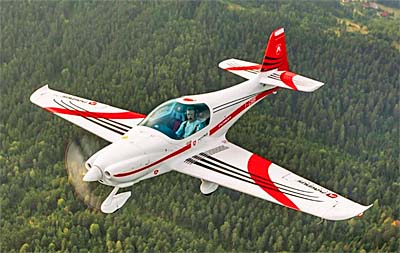 Fusion 212 by Magnus
Fusion 212 by Magnus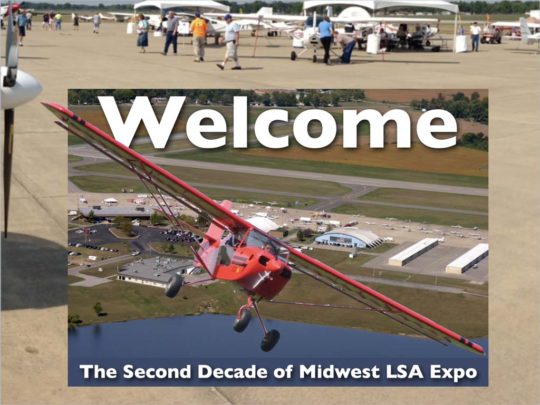 Rob Rollison the proprietor of the very successful
Rob Rollison the proprietor of the very successful 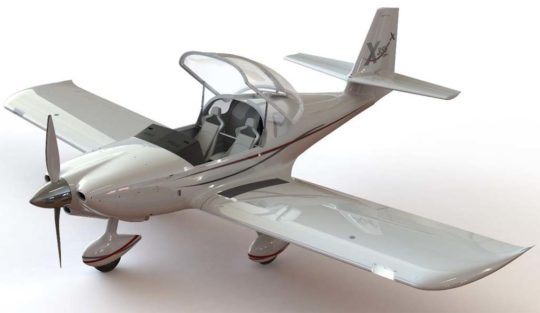 Deon will have the InnovAviation FX1 we saw at Midwest 2019 (
Deon will have the InnovAviation FX1 we saw at Midwest 2019 (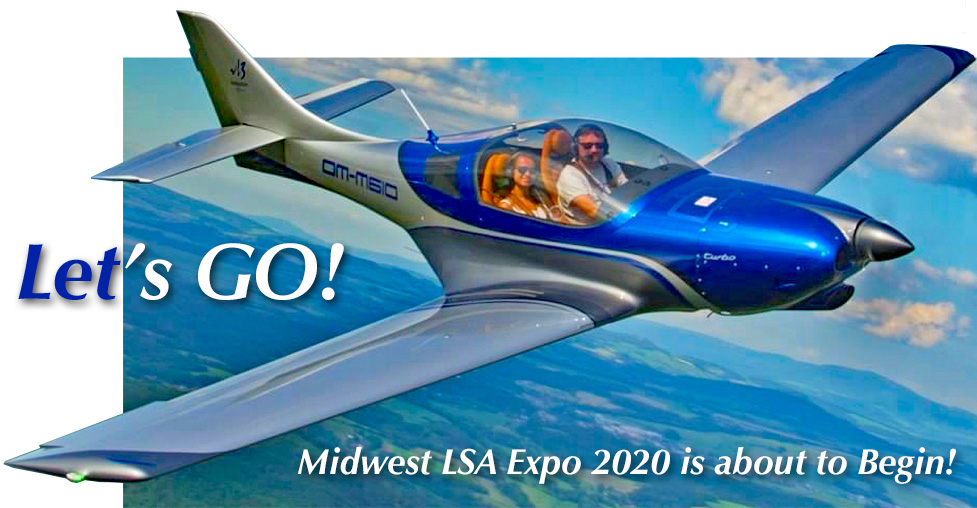
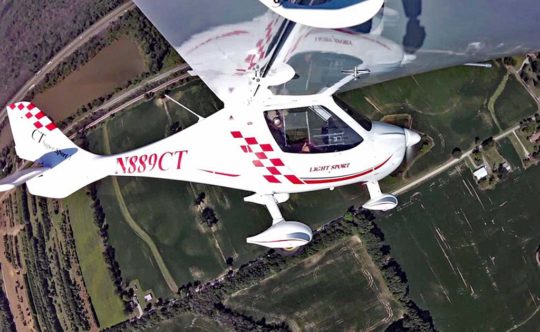 How does one LSA brand rise and stay above others?
How does one LSA brand rise and stay above others?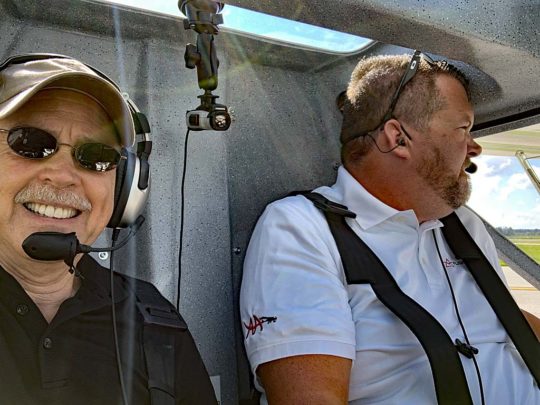 My tongue-in-cheek subtitle comes from the perspective of an average-sized pilot talking to the father and son team of Tom Sr. and Tom Jr. Gutmann. These gentle giants stand so tall above me that even Tom Cruise's acting box would not let me look this pair eye-to-eye.
Indeed, it is a tribute to the spaciousness of CT-series interiors that both these beefy fellows fit inside comfortably. Don't try that in a Cessna 150 (or even a 172)!
Flight Design's CT-series is roomy inside, 49 inches wide, a full 10 inches more than a Cessna 172. It also has super visibility. These facts are true of both CTLS, the current flagship of the German producer, and for the newest CT Super Sport, as seen in most of the nearby photos. The image of the two of us in the cockpit clearly shows that Tom Jr. and I have several inches between our shoulders and we were not smashed up against the door to produce this view.
My tongue-in-cheek subtitle comes from the perspective of an average-sized pilot talking to the father and son team of Tom Sr. and Tom Jr. Gutmann. These gentle giants stand so tall above me that even Tom Cruise's acting box would not let me look this pair eye-to-eye.
Indeed, it is a tribute to the spaciousness of CT-series interiors that both these beefy fellows fit inside comfortably. Don't try that in a Cessna 150 (or even a 172)!
Flight Design's CT-series is roomy inside, 49 inches wide, a full 10 inches more than a Cessna 172. It also has super visibility. These facts are true of both CTLS, the current flagship of the German producer, and for the newest CT Super Sport, as seen in most of the nearby photos. The image of the two of us in the cockpit clearly shows that Tom Jr. and I have several inches between our shoulders and we were not smashed up against the door to produce this view.
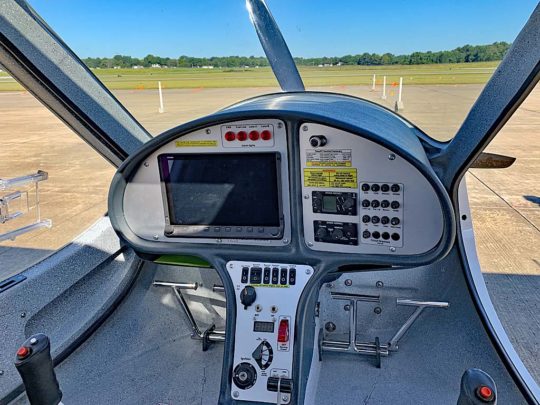 Tom and I flew Super Sport at the
Tom and I flew Super Sport at the 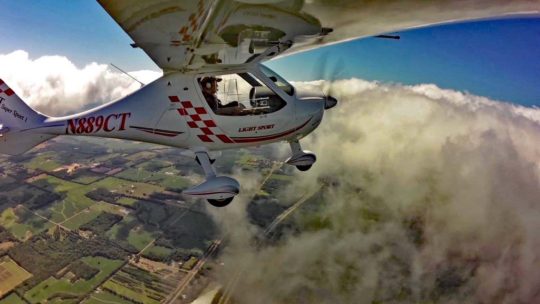 What you don't get with CT Super Sport is the back window and hat rack cabin space of CTLS. The slight enlargement of the longer, fancier LS does indeed make the cabin feel roomier and you have less space for things you need in the cockpit — though the floor compartments in front of both seats will suffice for most things you may want to access during flight. Both models keep the ample storage area aft of the cabin but you cannot access that while flying.
For this review, Super Sport was equipped with the
What you don't get with CT Super Sport is the back window and hat rack cabin space of CTLS. The slight enlargement of the longer, fancier LS does indeed make the cabin feel roomier and you have less space for things you need in the cockpit — though the floor compartments in front of both seats will suffice for most things you may want to access during flight. Both models keep the ample storage area aft of the cabin but you cannot access that while flying.
For this review, Super Sport was equipped with the 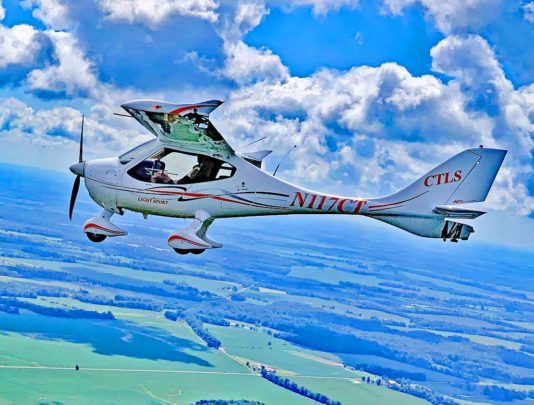 Coordinating closely with
Coordinating closely with 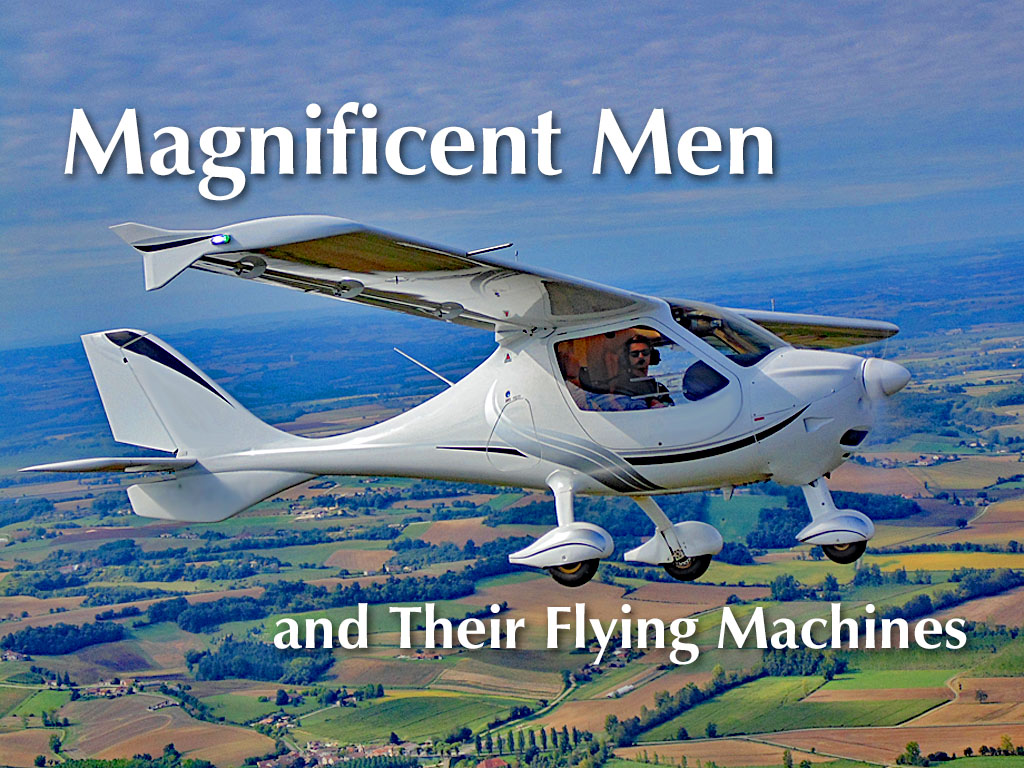
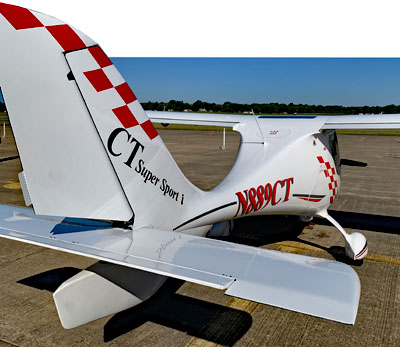 If SuperSport looks familiar to you, it should. It's based on the CTSW but joins several elements of the newer CTLS. In Europe, Flight Design has continued to deliver a lighter model from the CT series to conform to the microlight or European ultralight parameters.
SuperSport is something fresh as it takes a CTSW fuselage and grafts on the CTLS wing; adapts construction from the CTLS gear while still doing it with a single piece, like CTSW; employs tail structure from the newer model; and drafts the
If SuperSport looks familiar to you, it should. It's based on the CTSW but joins several elements of the newer CTLS. In Europe, Flight Design has continued to deliver a lighter model from the CT series to conform to the microlight or European ultralight parameters.
SuperSport is something fresh as it takes a CTSW fuselage and grafts on the CTLS wing; adapts construction from the CTLS gear while still doing it with a single piece, like CTSW; employs tail structure from the newer model; and drafts the 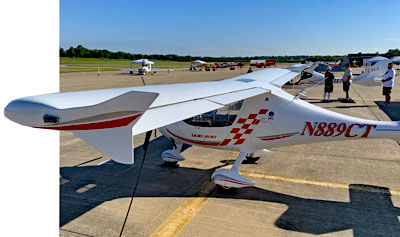 CT SuperSport is some 13 inches shorter than CTLS, Tom Jr. noted and it does not have the hat rack or aft cabin windows of CTLS. CT SuperSport also uses an electric trim for pitch only while CTLS has pitch, aileron, and rudder trim by wheels.
The new, lighter CT model is what I'd agree to call a performance model. It runs close to the top end of the permitted speed range, can fly around 1,000 statute miles, climbs 1,000 feet per minute, yet sips fuel at rates of four gallons per hour, even less if you retard the throttle slightly. It is a lively handling aircraft that still exhibits mild stall characteristics proven by our performing a full regimen of approach and departure stalls plus accelerated stalls in each direction.
Base price of CT SuperSport is: $135,000, some $40,000 less than the flagship CTLS. "Options include night flight equipment and autopilot with Level button," said Flight Design.
CT SuperSport is some 13 inches shorter than CTLS, Tom Jr. noted and it does not have the hat rack or aft cabin windows of CTLS. CT SuperSport also uses an electric trim for pitch only while CTLS has pitch, aileron, and rudder trim by wheels.
The new, lighter CT model is what I'd agree to call a performance model. It runs close to the top end of the permitted speed range, can fly around 1,000 statute miles, climbs 1,000 feet per minute, yet sips fuel at rates of four gallons per hour, even less if you retard the throttle slightly. It is a lively handling aircraft that still exhibits mild stall characteristics proven by our performing a full regimen of approach and departure stalls plus accelerated stalls in each direction.
Base price of CT SuperSport is: $135,000, some $40,000 less than the flagship CTLS. "Options include night flight equipment and autopilot with Level button," said Flight Design.
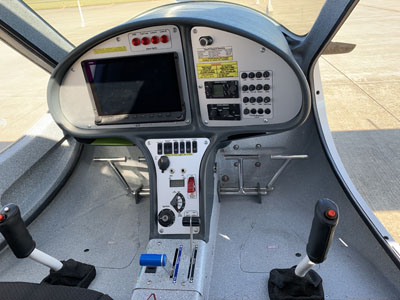 Father and son Gutmanns run
Father and son Gutmanns run  You have two more days of
You have two more days of 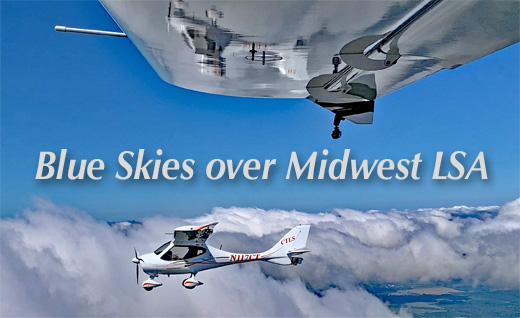
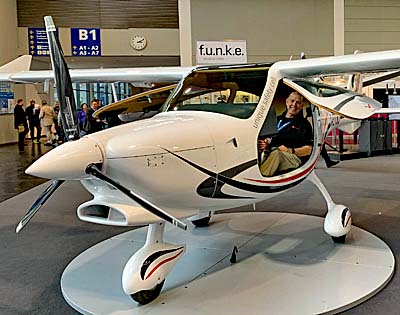 Then came a pause in the juggernaut that is
Then came a pause in the juggernaut that is 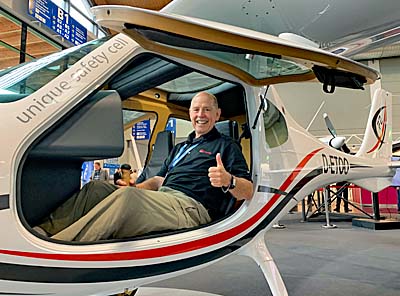 F2's cabin is 3.1 inches wider — now 51 inches wide, among the broadest in the category — and two inches taller than the CT series’ cabins. Door dimensions have also been increased, making for easier entry and exit. The entry door is set 2.3 inches lower than those in the CT series and pilots who are less flexible will appreciate these changes. Four cabin windows and a sunroof in the rear give the cockpit an open feeling and improve overall visibility, boasts Flight Design.
F2 is available with either a 100-horsepower
F2's cabin is 3.1 inches wider — now 51 inches wide, among the broadest in the category — and two inches taller than the CT series’ cabins. Door dimensions have also been increased, making for easier entry and exit. The entry door is set 2.3 inches lower than those in the CT series and pilots who are less flexible will appreciate these changes. Four cabin windows and a sunroof in the rear give the cockpit an open feeling and improve overall visibility, boasts Flight Design.
F2 is available with either a 100-horsepower 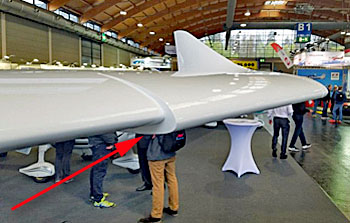
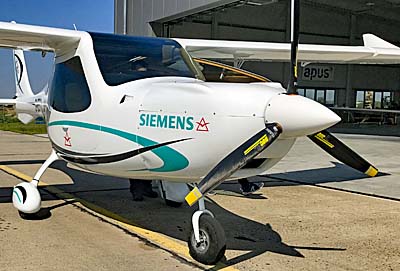 On its first successful first flight, Flight Design said, "Energy consumption for take-off and cruise was within the expected range, and the temperatures in the system were more positive than expected."
Flight Design created F2e with partners
On its first successful first flight, Flight Design said, "Energy consumption for take-off and cruise was within the expected range, and the temperatures in the system were more positive than expected."
Flight Design created F2e with partners 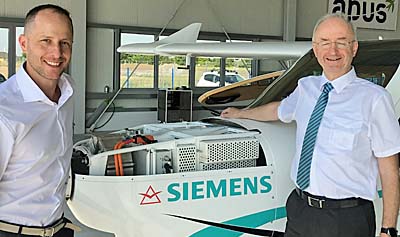
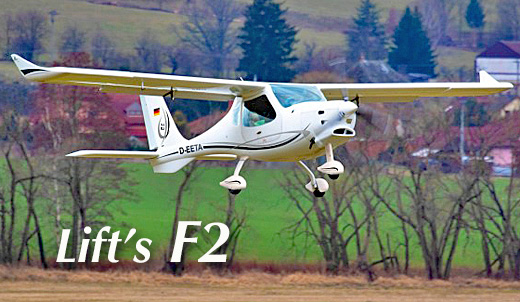
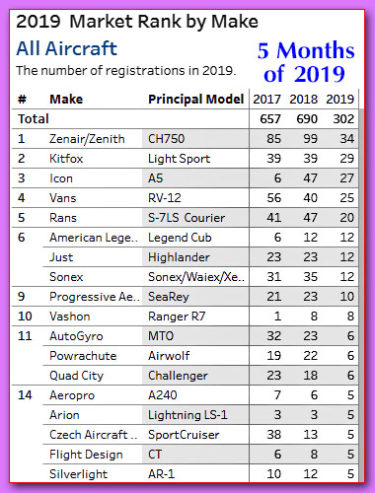 Our first quarterly report in many years should have come about April 1st. It did not. That date came as
Our first quarterly report in many years should have come about April 1st. It did not. That date came as 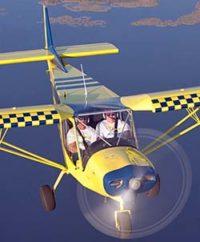 Digging deeper, the chart shows that longtime market leader
Digging deeper, the chart shows that longtime market leader 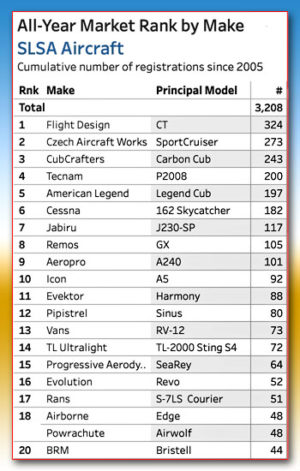 Strong SP kit suppliers include
Strong SP kit suppliers include 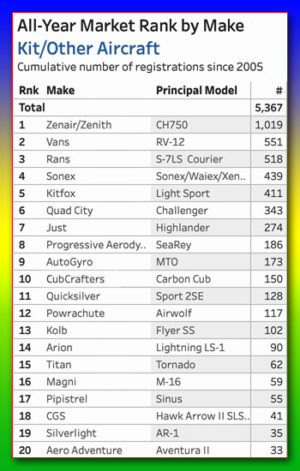 Yet the real surprise comes when you look at our final chart of this article. Kits appear ascendant since 2013, especially when compared to Special LSA that seems to have found a stable registration rate of around 200 aircraft per year. However, when you combine SLSA with Experimental LSA, you can see that all LSA types number closer to 300 units per year, compared to all SP kits at just shy of 400. Specialty registrations like Experimental Exhibition are steady but at a far smaller unit count.
Yet the real surprise comes when you look at our final chart of this article. Kits appear ascendant since 2013, especially when compared to Special LSA that seems to have found a stable registration rate of around 200 aircraft per year. However, when you combine SLSA with Experimental LSA, you can see that all LSA types number closer to 300 units per year, compared to all SP kits at just shy of 400. Specialty registrations like Experimental Exhibition are steady but at a far smaller unit count.
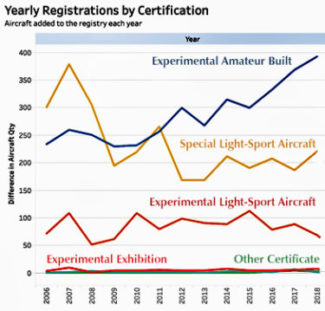 Any ELSA must be shipped from the factory as a bolt-for-bolt copy of the SLSA model, as required under the regulation. No producer can sell an ELSA without first getting approved for a SLSA, so to my mind, combining SLSA and ELSA makes for a fairer comparison to Sport Pilot kit aircraft.
If you love these numbers, please visit
Any ELSA must be shipped from the factory as a bolt-for-bolt copy of the SLSA model, as required under the regulation. No producer can sell an ELSA without first getting approved for a SLSA, so to my mind, combining SLSA and ELSA makes for a fairer comparison to Sport Pilot kit aircraft.
If you love these numbers, please visit 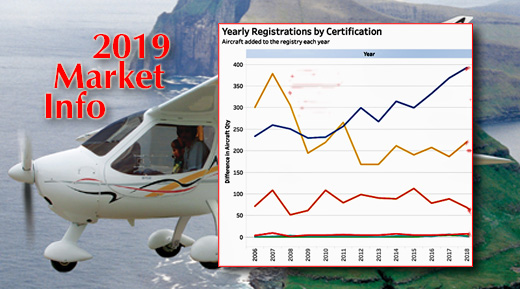
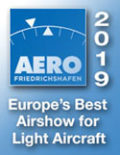 Jetting straight from Sun 'n Fun, we were able to arrive at
Jetting straight from Sun 'n Fun, we were able to arrive at 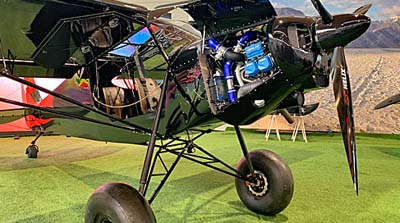 Zlin Ultra with Rotax 915iS
Zlin Ultra with Rotax 915iS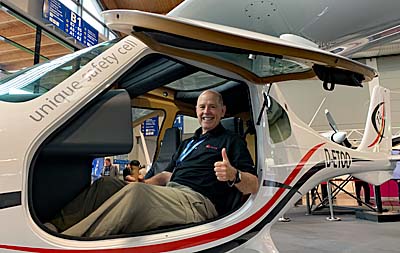
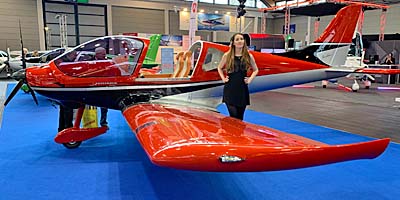 Belmont Aero DW200
Belmont Aero DW200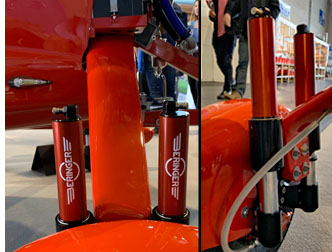 Beringer Everywhere
Beringer Everywhere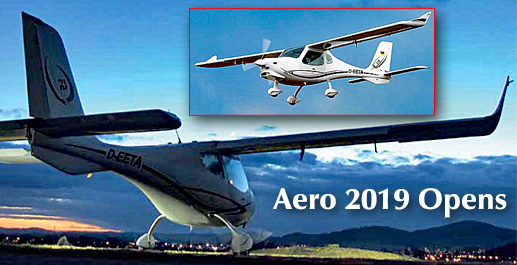
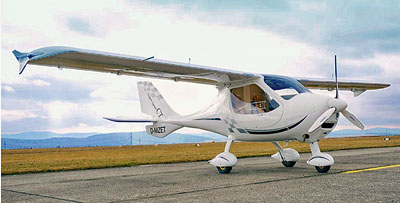 "This variation will now be reintroduced to the Americas," reported Tom Peghiny, President of
"This variation will now be reintroduced to the Americas," reported Tom Peghiny, President of 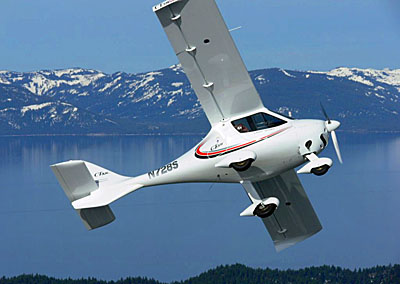
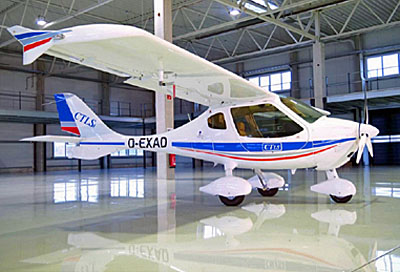 “The approval allows the company to deliver certified aircraft for delivery in Europe and the rest of the world,” said Joerges.
“This is good news for owners of CTLS-ELA aircraft currently operating under EASA’s Permit-to-Fly and for new customers looking for an advanced EASA certified light aircraft,” explained Flight Design general aviation COO, Daniel Guenther. “We can now offer owners of CTLS-ELA aircraft operating across Europe to bring their planes back to Flight Design for upgrading and conformity confirmation to allow them to have a permanent Restricted Flight Certificate (RTC).” Planning for the upgrade program is in the final stages and customers will be informed about the details in February 2019.
Flight Design observed that the company’s CT-series aircraft have been sold around the world since 2008 as Special Light-Sport Aircraft. "CTLSi-ELA brings a well proven platform, the security of an all carbon fiber airframe with an aircraft emergency rescue system and the high technology of all Flight Design aircraft," officials said.
“The approval allows the company to deliver certified aircraft for delivery in Europe and the rest of the world,” said Joerges.
“This is good news for owners of CTLS-ELA aircraft currently operating under EASA’s Permit-to-Fly and for new customers looking for an advanced EASA certified light aircraft,” explained Flight Design general aviation COO, Daniel Guenther. “We can now offer owners of CTLS-ELA aircraft operating across Europe to bring their planes back to Flight Design for upgrading and conformity confirmation to allow them to have a permanent Restricted Flight Certificate (RTC).” Planning for the upgrade program is in the final stages and customers will be informed about the details in February 2019.
Flight Design observed that the company’s CT-series aircraft have been sold around the world since 2008 as Special Light-Sport Aircraft. "CTLSi-ELA brings a well proven platform, the security of an all carbon fiber airframe with an aircraft emergency rescue system and the high technology of all Flight Design aircraft," officials said.
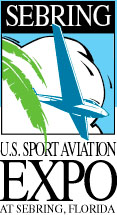 On Wednesday January 23rd, 2019 kicks off with the 15th running of Sebring. This year is also the 15th anniversary of FAA establishing the Sport Pilot / Light-Sport Aircraft sector in American aviation. This accomplishment was the "regulation heard 'round the world" in that many countries have now adapted the ASTM standards for use in their countries making exports from one country to another vastly easier than in the Part 23 certified aircraft world.
On Wednesday January 23rd, 2019 kicks off with the 15th running of Sebring. This year is also the 15th anniversary of FAA establishing the Sport Pilot / Light-Sport Aircraft sector in American aviation. This accomplishment was the "regulation heard 'round the world" in that many countries have now adapted the ASTM standards for use in their countries making exports from one country to another vastly easier than in the Part 23 certified aircraft world.
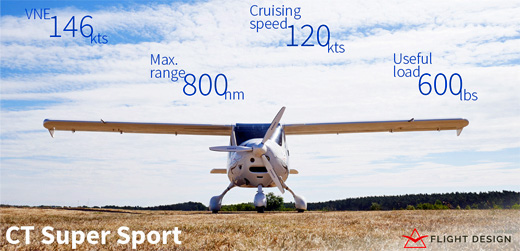

 Lift
Lift Flight Design said this "is a daring adventure by physically challenged pilots to fly around the world starting very soon, on November 18, 2018. Company CEO Lars Joerges announced that the German manufacturer is a contributing sponsor to the undertaking. The flight will be conducted using a CTLS aircraft.
According to Flight Design, the globe-girdling flight will start from Geneva, Switzerland and will plan to visit 40 countries in five continents while traveling more than 49,000 miles. The flight plans to make “150 stops to meet, share, inspire and promote the inclusion of disabled people worldwide,” organizers said. The goal is to raise funds for Handicap International and is further sponsored by the Lions Clubs International, a fraternal organization that raises money for worthy causes.
Flight Design said this "is a daring adventure by physically challenged pilots to fly around the world starting very soon, on November 18, 2018. Company CEO Lars Joerges announced that the German manufacturer is a contributing sponsor to the undertaking. The flight will be conducted using a CTLS aircraft.
According to Flight Design, the globe-girdling flight will start from Geneva, Switzerland and will plan to visit 40 countries in five continents while traveling more than 49,000 miles. The flight plans to make “150 stops to meet, share, inspire and promote the inclusion of disabled people worldwide,” organizers said. The goal is to raise funds for Handicap International and is further sponsored by the Lions Clubs International, a fraternal organization that raises money for worthy causes.
 Handiflight is a non-profit association formed in Gruyère, Switzerland in 2007. The organization hosts what they call the biggest fly-in for disabled pilots from all around the world.
After 10 years of successful events, Handiflight is now tackling a new goal: “To fly around the world to explore new horizons, look for new challenges, combat prejudices and promote the inclusion of disabled people.”
“We met with Daniel Ramsier, one of the organizers of the Handiflight,” said Joerges. "We were very inspired by his vision and wanted to be part of this adventure.” Primary pilots Paolo Pocobelli, Guillaume Féral and Mike Lomberg will lead an international team of more than 15 pilots with physical disabilities.
Handiflight is a non-profit association formed in Gruyère, Switzerland in 2007. The organization hosts what they call the biggest fly-in for disabled pilots from all around the world.
After 10 years of successful events, Handiflight is now tackling a new goal: “To fly around the world to explore new horizons, look for new challenges, combat prejudices and promote the inclusion of disabled people.”
“We met with Daniel Ramsier, one of the organizers of the Handiflight,” said Joerges. "We were very inspired by his vision and wanted to be part of this adventure.” Primary pilots Paolo Pocobelli, Guillaume Féral and Mike Lomberg will lead an international team of more than 15 pilots with physical disabilities.
 Upon the completion of this flight it will mark the third flight around the world for a CT-series aircraft. The first time occurred in 2007 by two pilots from India to celebrate the Silver Jubilee of the Indian Air Force. The second round-the-world flight was Azimuth 270, a flight by Yannick Bovier and Francisco Agullo, two Swiss Airbus pilots who flew a westward flight around the equator of the Earth in 2010. Soon will begin this great and inspiring flight by Handiflight!
Upon the completion of this flight it will mark the third flight around the world for a CT-series aircraft. The first time occurred in 2007 by two pilots from India to celebrate the Silver Jubilee of the Indian Air Force. The second round-the-world flight was Azimuth 270, a flight by Yannick Bovier and Francisco Agullo, two Swiss Airbus pilots who flew a westward flight around the equator of the Earth in 2010. Soon will begin this great and inspiring flight by Handiflight!





 I was one of those frustrated pilots, thanks to early experience with Lane A/B lights.
I had flown with a flock of Light-Sport Airplanes to the Bahamas. We had long over-water stretches. When you fly out of sight of all land in a single engine airplane, the pucker factor tends to rise.
Being a modestly-experienced Bahamas island-hopping LSA pilot, I figured to take off last from the Nassau-to-Bimini flight. The other pilots fired up, taxied out, and launched into the air. My cabin mate and I, aviation journalist James Lawrence, tried to follow but on firing up, I had a red lane B light that would not go off after doing the usual checks. I would not commit to flight over lots of water with a red light staring back at me and I had no one nearby to consult as to the problem.
Therein lies the problem. What was wrong?
It turned out to be a connector that did not maintain contact. Nothing whatsoever was wrong with the engine, explaining why the light went off later and we were able to launch and fly without incident to the other island. Nonetheless, whatever that had been nagged at me, stealing a bit of the joy of flight as I was uninformed.
I was one of those frustrated pilots, thanks to early experience with Lane A/B lights.
I had flown with a flock of Light-Sport Airplanes to the Bahamas. We had long over-water stretches. When you fly out of sight of all land in a single engine airplane, the pucker factor tends to rise.
Being a modestly-experienced Bahamas island-hopping LSA pilot, I figured to take off last from the Nassau-to-Bimini flight. The other pilots fired up, taxied out, and launched into the air. My cabin mate and I, aviation journalist James Lawrence, tried to follow but on firing up, I had a red lane B light that would not go off after doing the usual checks. I would not commit to flight over lots of water with a red light staring back at me and I had no one nearby to consult as to the problem.
Therein lies the problem. What was wrong?
It turned out to be a connector that did not maintain contact. Nothing whatsoever was wrong with the engine, explaining why the light went off later and we were able to launch and fly without incident to the other island. Nonetheless, whatever that had been nagged at me, stealing a bit of the joy of flight as I was uninformed.
 No more, thanks to Dynon and guys like John Hurst who works closely with the west coast avionics provider.
Now, as the images show, you can ask your Dynon HDX Touch SkyView instrument for the reason, and it will list for you what is wrong. Some problems need to be fixed when able. Others might have to ground the flight until remedied. Wouldn't you want to know which it is?
"This update happened partly because of your early experience, Dan," clarified John. "Now the pilot can know the reason the light came on and can make an informed decision."
Thanks, John and
No more, thanks to Dynon and guys like John Hurst who works closely with the west coast avionics provider.
Now, as the images show, you can ask your Dynon HDX Touch SkyView instrument for the reason, and it will list for you what is wrong. Some problems need to be fixed when able. Others might have to ground the flight until remedied. Wouldn't you want to know which it is?
"This update happened partly because of your early experience, Dan," clarified John. "Now the pilot can know the reason the light came on and can make an informed decision."
Thanks, John and